Golf Retail


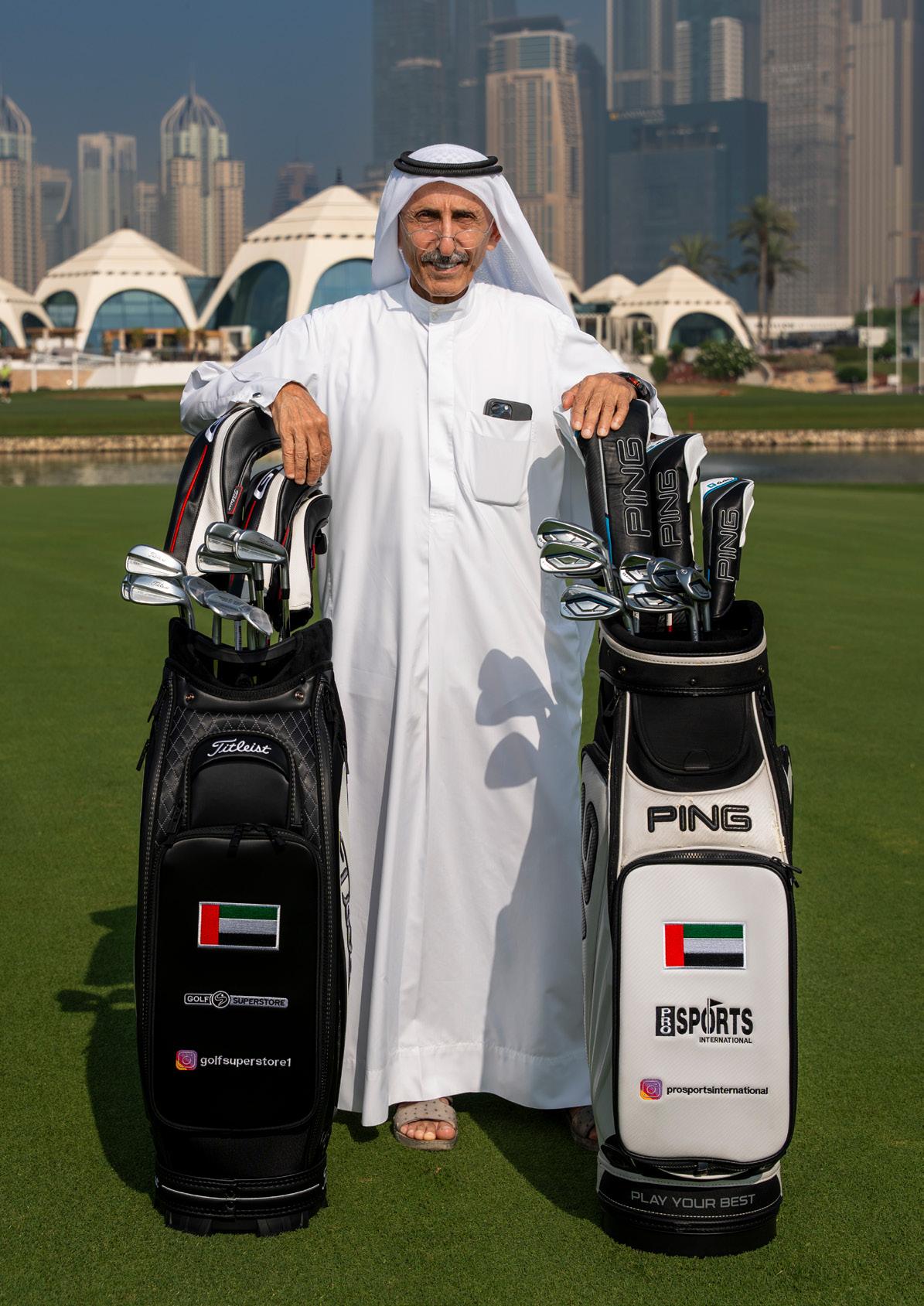


A NEW CLASS OF DRIVERS



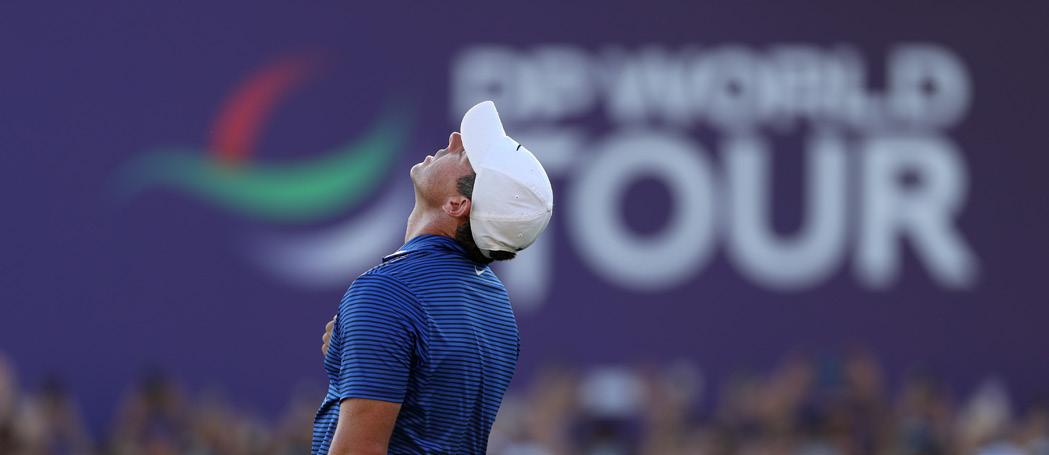










Both the DP World Tour and PGA TOUR are currently riding the crest of a commercial wave. We have signed five new DP World Tour partnership deals in the past two months, with highlights including UAE based property investment company Aldar, and Danish renewable energy company Vestas, coming on board as top tier ‘Official Marketing Partners’ in recent weeks.
As we sit here in May 2025, our currently contracted sponsorship revenue is now 277% higher than it was at the same time in 2019. With a global pandemic sandwiched inbetween straining marketing budgets across the globe, that is a remarkable recovery by any standard. The PGA TOUR has also started 2025 strongly, with 14 deals signed in the first quarter of 2025 alone.
These statistics might surprise some, given the state of flux in the men’s professional game in recent times. But it’s clear that brands are no longer prepared to sit on their hands and wait for a resolution to golf’s internal disagreements – they see the game’s growth and want to be part of it.
So, what are the various ingredients that have unlocked this commercial momentum? Firstly, many brands think globally and want a scalable, flexible and global platform to activate from. The DP World Tour plays in 26 countries, which is a USP that other Tours can’t touch (our nearest rival plays in half that). Our revamped season structure – focused around five Global Swings before the Back 9 of nine
historic events and the season-ending Playoffs – has successfully reinforced the DP World Tour’s position as ‘Golf’s Global Tour’.
Secondly, golf has enjoyed a mainstream popularity boom. Participation is up significantly since the pandemic – a 44% increase in active players from 2016 to 2023 – and the success of Full Swing on Netflix is bringing new audiences to the sport. That is flowing down into attendance of professional tournaments, with a 8% increase in spectator numbers on the DP World Tour in 2024 vs 2023.
Thirdly, as part of our Strategic Alliance, we have been working with the PGA TOUR to identify sponsorship opportunities that can benefit both organisations. This includes existing PGA TOUR partners being able to globalise their marketing platform by signing up with us as well – an opportunity taken up by the likes of FedEx, with others to be announced shortly. That level of co-operation was unthinkable only five years ago. We are also using the financial security that the Strategic Alliance gives us to invest in the quality of our product. This includes investments in new technology, such as AI, to boost the fan experience. These investments are working, with fan satisfaction scores in 2024 at their highest level in five years, and sponsor satisfaction scores hitting a new record. These investments often require partners to deliver them, and this provides authentic storytelling opportunities for the

savvy Tech Partner or Supplier who engages in a formal partnership with the Tour.
Finally, we have also started reframing the wider narrative to reinforce that golf is on the cusp of a major opportunity. Golf is currently undergoing its “third wave” of major commercial growth. The first was the Mark McCormack and Arnold Palmer driven revolution in the 1970’s that professionalised the game’s commercial structure.
The second was the Tiger Woods revolution in the 1990’s, which used his super star appeal to grow the game internationally. These moments pushed golf in the right direction towards a global product, but never quite cracked it. The ingredients are now there –massive spikes in participation, a large influx of investment capital, technology democratising the sport and icons like Rory McIlroy making history – to finally reshape golf for long-term, sustainable success and make it truly global.
At the DP World Tour, we are working hard to make sure that we capitalise fully on the opportunities at hand. Companies in the Middle East are ahead of the curve, with the likes of DP World, Emirates and Aldar using golf as a vehicle to grow their brand and business internationally and enjoying strong returns as a result.
Long may that continue.
Max Hamilton Commercial Director, DP World Tour









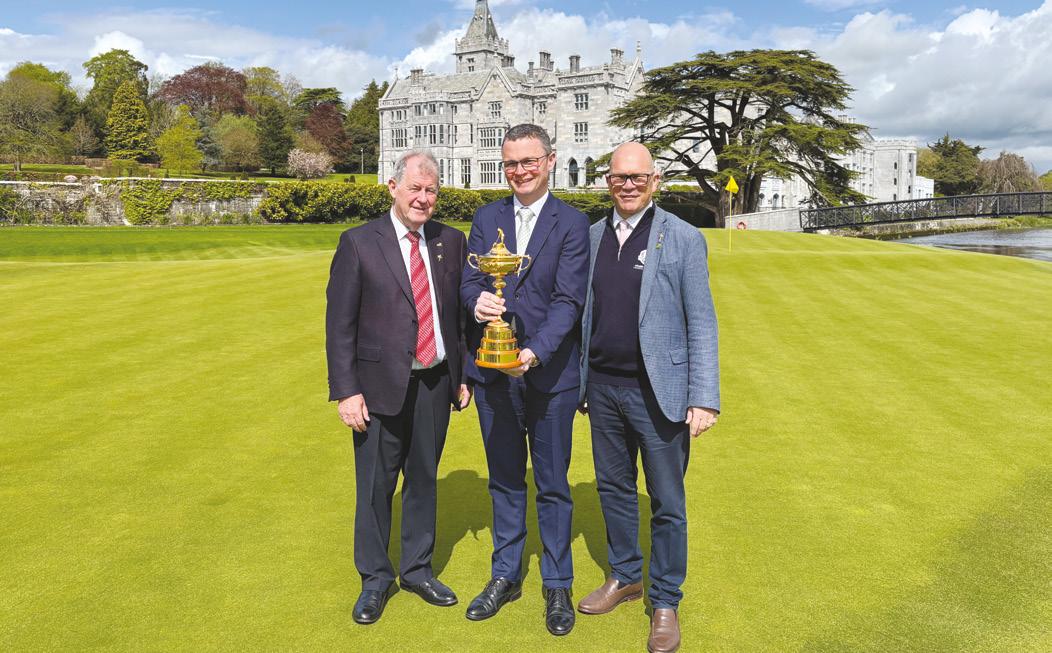
Golf fans across Europe have another date for the diary as the 2027 Ryder Cup at Adare Manor has been officially confirmed for 13–19 September 2027. Announced by Ryder Cup Europe, the dates mark the start of the countdown for what promises to be an unforgettable edition of golf’s greatest team contest—and the centenary edition of the event.
The week-long festival of golf will see four days of practice and build-up from Monday 13 to Thursday 16 September, before Europe and the United States battle it out for glory over three days of competition, Friday 17 to Sunday 19 September. Ireland is set to host the Ryder Cup for the second time, following Europe’s record-breaking 18½-9½ victory at The K Club in 2006 under Ian Woosnam’s captaincy.
For Adare Manor, which sits in the heart of County Limerick along the banks of the River Maigue, the confirmation is a moment of pride. JP McManus, owner of the five-star estate, is relishing the opportunity to showcase the venue on golf’s biggest stage: “Hosting the 2027 Ryder Cup is an incredible honour for Adare Manor and the entire south west community. Now that the dates are announced, anticipation will only grow as we build towards welcoming thousands of visitors to Limerick and Ireland, showcasing the island to a global audience.”
The golf course at Adare Manor, originally
designed by Tom Fazio and extensively renovated in 2017, has already built a fine reputation. It hosted the Irish Open in 2007 and 2008, with champions Pádraig Harrington and Richard Finch, and the JP McManus Pro-Am in 2005, 2010 and 2022, which has raised millions for charity.
The Ryder Cup, of course, isn’t just about the players or the course. It’s a magnet for tourism and local economies. The 2014 Ryder Cup at Gleneagles generated around £106 million for the Scottish economy, while the 2018 event in France delivered a staggering €235 million. Early estimates suggest that the 2027 edition at Adare Manor could attract up to 250,000 visitors across the week, providing a huge boost to local businesses, hotels, and restaurants. Limerick and the surrounding region are expected to reap the rewards of Ireland’s passion for golf.
Guy Kinnings, Chief Executive of the European Tour Group, called the announcement of the dates “a significant milestone in the Ryder Cup journey.” He added: “With Rory McIlroy’s Masters win to complete the career Grand Slam and the anticipation of The Open at Royal Troon, golf’s profile on the island of Ireland has never been higher. The 2027 Ryder Cup will add to that momentum as the event marks its centenary in style.”

The Irish Government is fully behind the 2027 Ryder Cup, promising a “whole-of-Government” approach to ensure the event’s success. Patrick O’Donovan T.D., Minister for Arts, Media, Communications, Culture and Sport, said: “We are very pleased that Ryder Cup Europe has announced the dates for the Ryder Cup in Adare, the next European destination for this prestigious tournament. The passion of the Irish people for golf will make this event truly memorable.”
Charlie McConalogue T.D., Minister of State for Sport and Postal Policy, echoed these sentiments: “Major sporting events like the Ryder Cup inspire participation, boost tourism, and contribute to economic growth. Adare Manor will provide a world-class venue for a world-class event.”
Fans can expect updates on ticket sales in 2026, while premium experience packages will open for registration later this year. Volunteer opportunities, another way for golf lovers to get up close to the action, will also be announced soon.
As the 100th anniversary of the Ryder Cup draws closer, Adare Manor’s role as host venue promises to be a highlight not just for Irish golf, but for the sport worldwide. With a course that has already hosted champions and a community that lives and breathes the game, the 2027 Ryder Cup at Adare Manor is set to deliver a week of drama, passion, and unforgettable golf.
BUILT FOR SPEED. Drivers come in all shapes and sizes with claims of more of everything, but unless it’s optimised to your game, your expectations and drives will come up short (and in the rough). In the new G440 drivers, multiple technologies, including a lighter overall system weight and longer shaft, help bring you more ball speed for more distance, more forgiveness and more fun.

GET FIT. GET OPTIMISED.
LOWEST CG EVER
Mass savings from the Free Hosel help optimise the CG, aligning it with the force line for more distance and fairway-finding forgiveness.

LIGHTER OVERALL SYSTEM FAST, FORGIVING FACE
Composite crown contributes to lighter overall system, delivering faster speeds for more distance and a pleasing sound.
Shallow, thin face increases flexing to ensure high-launching results for consistent ball speed on off-centre hits.
THE U.S. OPEN PREVIEW
Scottie Scheffler’s PGA glory sets the stage for a fierce showdown at Oakmont Country Club, as the 2025 U.S. Open heads to golf’s most storied and testing venue.

12 THE OFFICIAL PETE COWEN COLUMN
Pete breaks down Scottie Scheffler’s unique swing, Oakmont’s punishing setup, and the keys to winning a Major.
24 PGA CHAMPIONSHIP DEBRIEF
We take a look back at at the second Major of the season and highlight a few stories you might have missed.
26 TOUR NEWS
Local and international stories that grabbed the headlines.
28 DP WORLD TOUR SWING UP DATE
Six stops, two Majors, and all to play for in the 2025 Race to Dubai’s Global Swings showdown.
30 COVER FEATURE
TEEING UP THE REGION’S GOLF GAME
From a casual swing at the Dubai Creek G&YC to creating the region’s first golf retail empire—His Highness Sheikh Saeed Al Maktoum reveals how Prosports International helped turn the desert into a global golfing paradise.
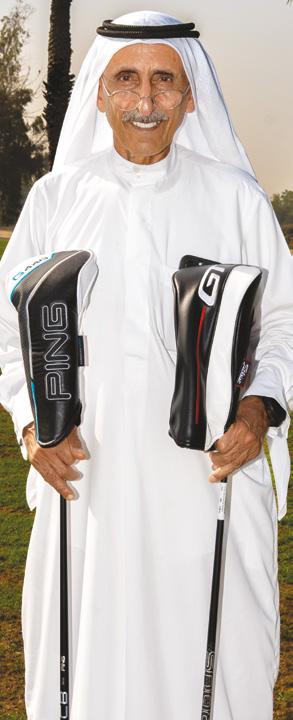

34 RICHARD MANSELL
How a fearless skydive and a switch back to Titleist transformed the Englishman into a DP World Tour champion —now eyeing bigger things in Dubai.
38 MEET MARTIN COUVRA
France’s rising star making waves on the DP World Tour and targeting a spot in the Race to Dubai Play-Offs after a breakout season.
40 ON THE MEND
Chris Wood opens up about injury battles, Ryder Cup regrets, and reigniting his fire for the DP World Tour.

























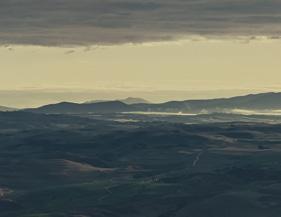


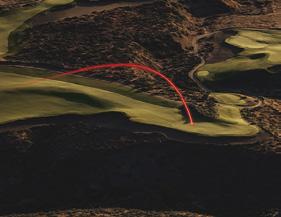
























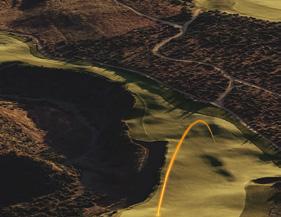













































































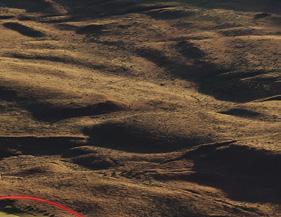
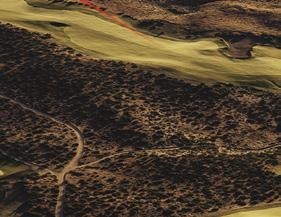







































































LIVERPOOL GOLF & CITY BUZZ
World-class courses, Beatles nostalgia, and riverside vibes—all within 45 minutes of Liverpool.

Tropical luxury meets award-winning golf in the heart of Thailand’s stunning west coast. Play, relax, and soak up the unbeatable Phuket vibes.

DUBAI GOLF TROPHY


TaylorMade’s R7 Quad Mini Driver packs a punch of old-school style and modern performance. But does it have the versatility to challenge the best in the field?
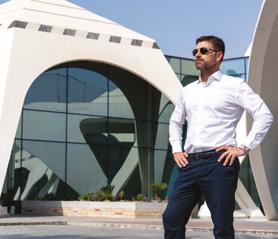
Amateurs rallied from behind to tie 16-16 and keep the Dubai Golf Trophy at Emirates GC, thanks to Barry Pavic, Aayan Dadabhoy, and unbeaten Ahmad Skaik. Skaik shared his insights on the dramatic showdown.
Jordanian golf’s rising stars, as they chase glory at the U.S. Junior Amateur. Will their sibling synergy spark a breakthrough on America’s biggest stage?


From Dubai Creek to the Emirates Golf Club helm, Stephen Hubner shares insights on tradition, excellence, and his plans for one of the Middle East’s most storied venues.
Following the JAGA International Amateur Open, JAGA’s new Middle East campus opens this September at Al Ain Equestrian Shooting and Golf Club.
The performance by Scottie Scheffle at the PGA Championship was a timely reminder that class is permanent. After a spell on the sidelines with injury, some wondered if he’d lost his edge. But as he showed over that crucial third round at Quail Hollow, the doubters were well wide of the mark. What impresses me most isn’t the sheer volume of birdies or his final-round composure, but the way he manages his movement and balance through the swing.
Scheffler’s footwork has been a talking point among analysts and fans. To the untrained eye, it can look chaotic — like he’s lost his footing and is trying to keep up with his own body, but it’s nothing of the sort. It’s actually a rebalancing move that’s been part of his DNA since he was ten years old. His arms come in, his club goes out, and that dynamic movement means he has to pull that trail foot back to stay centred. Otherwise, he’d topple straight over the ball. It’s an instinctive adjustment, much like Greg Norman’s footwork back in the day—different players, same idea.
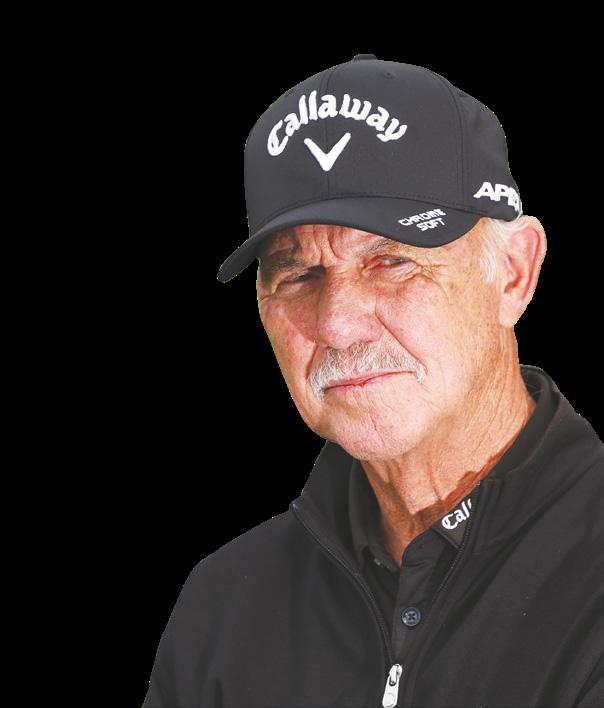
missing the green — you’re worried about finding your ball at all. The rough is so tough that even a yard offline can leave you hacking out sideways. And even if you do find the fairway, holding those greens is no small feat. That’s where the longer, more accurate drivers have such an advantage. Players like Scheffler, McIlroy, Rahm and Bryson — Major winners who can drive it long and straight — will be the ones to watch.
Scheffler’s resurgence is a great lesson for all of us: it’s not about chasing perfect positions or textbook moves. It’s about trusting what you do, knowing how to repeat it under pressure, and never forgetting the basics—drive it straight, hit it close, and hole the putt. At Oakmont, the player who can do those three things better than anyone else will be the one holding the trophy come Sunday evening.
This is what sets Scheffler apart. He’s not trying to swing in a textbook-perfect way. Instead, he’s repeating a move that’s his and his alone—one he’s trusted for decades. I’ve always said I like onedimensional players—those who have a move and stick to it. Scheffler’s that kind of player. He’s not trying to be all things to all people—he just does what he does, and he does it better than almost anyone.
The other thing I admire is how consistent he is with his shot shape. His numbers on TrackMan show that he’s going to fade the ball every time. That’s his go-to shot, and he’s comfortable with it. He doesn’t chase extra speed or distance. He knows his game and plays within it. That’s why his distance control is so impressive — he’s pin-high more often than not, and that’s no accident. It’s all down to that repeatable move.
But let’s not forget the final piece of the puzzle: putting. Phil Kenyon has done a phenomenal job with Scheffler on the greens. There’s no point knocking it stiff if you can’t hole the putt, and Kenyon’s worked with him to make sure that part of his game is just as strong. When you combine world-class ball-striking with a hot putter, you make the game look easy. Of course, it’s never easy—it just looks that way when you’re doing everything right.
Looking ahead to Oakmont for the U.S. Open, it’s going to be fascinating to see how Scheffler and the other top players handle a beast of a course. If they set it up anything like they did in 2016 when Dustin Johnson won, it will be a true test of every part of a player’s game. Oakmont doesn’t just punish bad swings — it punishes anything less than perfect. Miss a fairway there, and you’re not worried about

For me, there’s no substitute for that kind of simplicity and belief. Scheffler’s got it, and Oakmont’s the perfect place for him to show it again.
But as always, don’t get too carried away with the usual stats. “Greens in regulation” can be a misleading measure. You can hit a green and be 40 feet from the hole, or miss it by a yard and be 8 feet away. Which would you rather have? For me, the stats that matter are “effective fairways” and “effective greens”— where your misses are and how close you’re actually to the pin. You can miss five fairways by a yard and still have birdie chances, but on the stat sheet, it just says “missed fairway.” Doesn’t tell the full story.
For the players I work with, I always ask them to break down how many birdie chances they’ve had from 25 feet down to 5 feet or less. That’s the real measure of whether you’re playing well. If you’re giving yourself enough of those looks, the scores will follow. It’s the same for amateurs — start tracking those numbers and you’ll get a far clearer picture of how you’re really playing.
Another point for the club golfer: if you’re constantly missing one side — always left, always right — it might not be your swing. It could be your club set-up. Chris Sells, who was with the English Golf Union, was the best I ever saw at spotting that. He could tell in a heartbeat if your clubs were too flat or too upright. Sometimes the simplest fix can make the biggest difference.
And while we’re on the topic of equipment, I often get asked how often you should change your wedges. Fresh grooves are definitely important, especially if you want to get that check on firmer links or Middle East greens. But don’t get too obsessed with the gear. The right ball and, more importantly, the right technique are just as crucial. I’ve got a wedge with no grooves at all, and I can still spin it for fun— because technique trumps everything. n









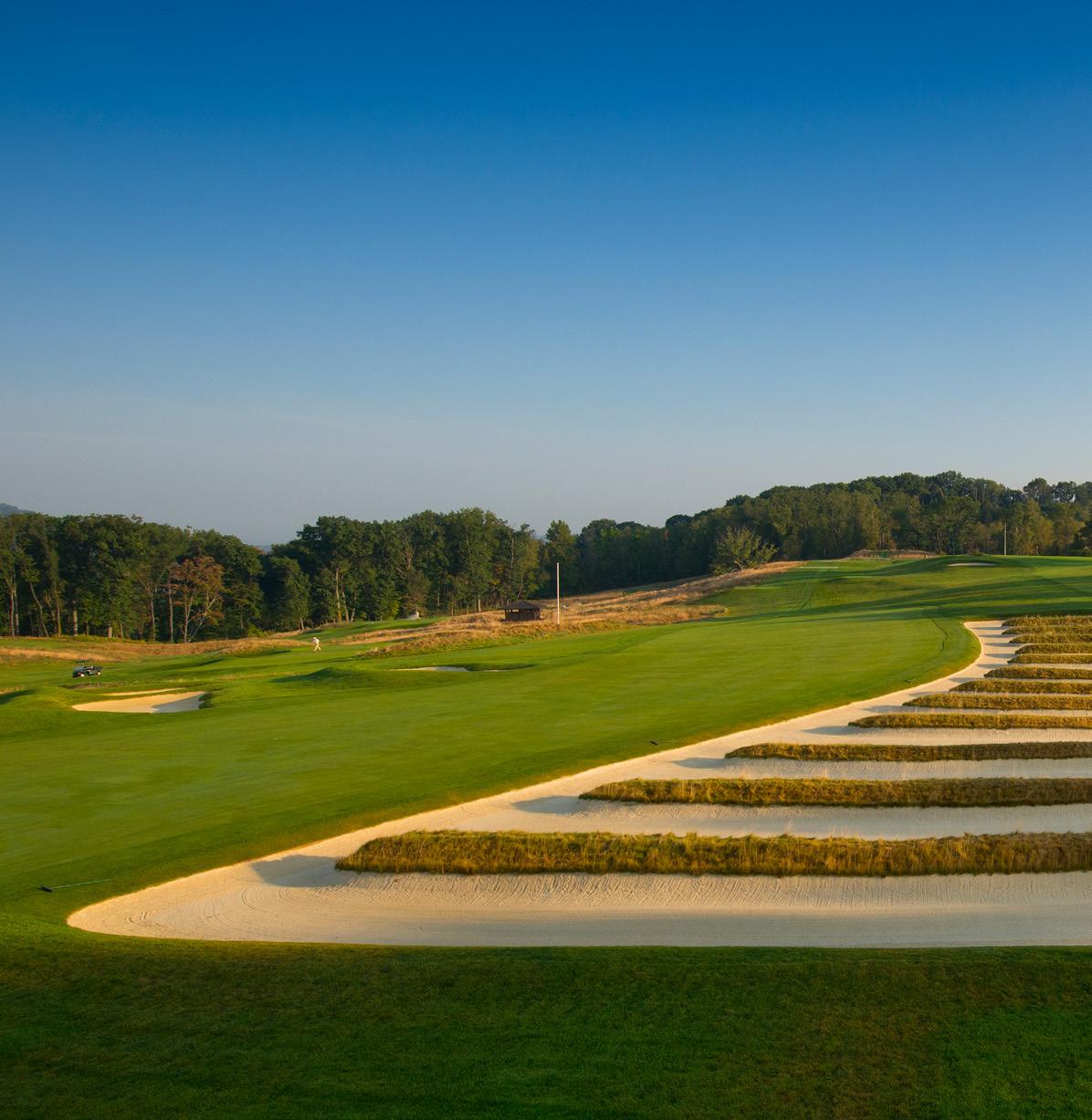
From fast greens that gave birth to the Stimpmeter to a bunker so big it needs its own postcode, Oakmont is no ordinary track. With the U.S. Open back here for a record 10th time, we’ve rounded up 10 facts you won’t want to miss. This Pennsylvania powerhouse has been rattling the cages of golf’s finest for over a century, dishing out heartbreak and glory in equal measure. From Jack Nicklaus’s first Major to Johnny Miller’s Sunday 63 that left jaws on the floor, Oakmont’s stories are legendary. So buckle up and dive into these 10 nuggets of golfing gold that prove why Oakmont is the ultimate crucible of the game!


Record-setting host
Oakmont Country Club, located near Pittsburgh, Pennsylvania, is hosting the U.S. Open for a record 10th time in 2025—more than any other course in America.
Designed for difficulty
The course was designed by Henry Fownes in 1903 with the intent of challenging even the best golfers. It features 175 bunkers, narrow fairways, and large, undulating greens.
The infamous Church Pew bunker
One of Oakmont’s most notable features is the Church Pew bunker, a 100-yard-long hazard with 12 grass-covered ridges, situated between the third and fourth fairways.
Challenging course layout
For the 2025 U.S. Open, Oakmont will play as a par-70 course measuring 7,372 yards. The layout
includes only two par-5s, both exceeding 600 yards, and a 289-yard par-3 8th hole—the longest par-3 in U.S. Open history.
Anchor site for future U.S. Opens
Recognising its rich history and challenging layout, the USGA has designated Oakmont as an “anchor site” for future U.S. Open Championships. Beyond the 2025 tournament, Oakmont is scheduled to host the U.S. Open again in 2033, 2042, and 2049, ensuring its continued prominence in the golfing world.
Course restoration efforts
Recent renovations by architects Tom Fazio and Gil Hanse have aimed to restore Oakmont’s original design, removing thousands of trees to return it to its intended links-style appearance.
Host of multiple championships
Beyond the U.S. Open, Oakmont has hosted a

total of 17 USGA championships, including six U.S. Amateurs and two U.S. Women’s Opens, underscoring its prominence in American golf.
High course rating
Oakmont boasts a course rating of 77.7 and a slope rating of 142, reflecting its status as one of the most challenging courses in the United States.
Historic landmark status
In recognition of its significance in golf history, Oakmont was designated a National Historic Landmark in 1987.
Historic champions
Oakmont has been the site of several memorable U.S. Open victories, including those by Jack Nicklaus (1962), Johnny Miller (1973), and Dustin Johnson (2016).


Ahead of the showdown at Oakmont, the USGA accepted a record-setting 10,202 entries, surpassing the previous high of 10,187 from the 2023 championship at Los Angeles Country Club.
“The USGA is proud to once again return to Oakmont Country Club, one of the cathedrals of the game,” said John Bodenhamer, USGA Chief Championships Officer. “The U.S. Open’s two-stage qualifying framework provides thousands of
professional and amateur golfers worldwide an opportunity to earn a place in the field. Based on the record number of entries, there continues to be tremendous interest in competing in our national championship.”
This year’s hopefuls ranged from a 13-year-old Texan to a 73-year-old Californian, highlighting the championship’s universal appeal. Local Qualifying, a series of 18-hole competitions, was held across 110 sites in late April and early May. Those advancing moved

on to the rigorous Final Qualifying stage – 36 holes played in one day – contested at three international sites last month and 10 U.S. locations in early June.
Notable names already emerging from Final Qualifying include Jordan Smith, Carlos Ortiz, and Scott Vincent. Meanwhile, former U.S. Open champions Lucas Glover (2009), Graeme McDowell (2010), and Webb Simpson (2012) are gearing up to tackle ‘Golf’s Longest Day’ in pursuit of a spot in the field.
As the 2025 U.S. Open heads to the legendary Oakmont Country Club in Pennsylvania, one hazard looms larger than most – Oakmont’s iconic Church Pew bunker. A feature as treacherous as it is famous, this sprawling sand trap has long been a source of dread for golfers who stray off the fairway.
Positioned ominously between the third and fourth holes, the Church Pew bunker is

a masterpiece of design and intimidation. Originally a collection of eight smaller bunkers, it was consolidated into one massive hazard in the 1920s. Following Tom Fazio’s 2005 expansion, it now stretches over 100 yards in length, tapering from 43 yards wide at one end to 18 yards at the other. Adding to its challenge are 12 three-foot-high fescuecovered ridges that slice through the trap, creating a series of awkward lies for any ball
that finds its way into the sand.
The bunker’s design ensures that misjudged drives on either the third or fourth fairways are severely punished, with recovery often a near-impossible task. The hazard is so daunting that even Tiger Woods, during practice rounds for the 2007 U.S. Open, refused to hit a single shot from the Pews, opting instead to focus on avoiding them altogether.


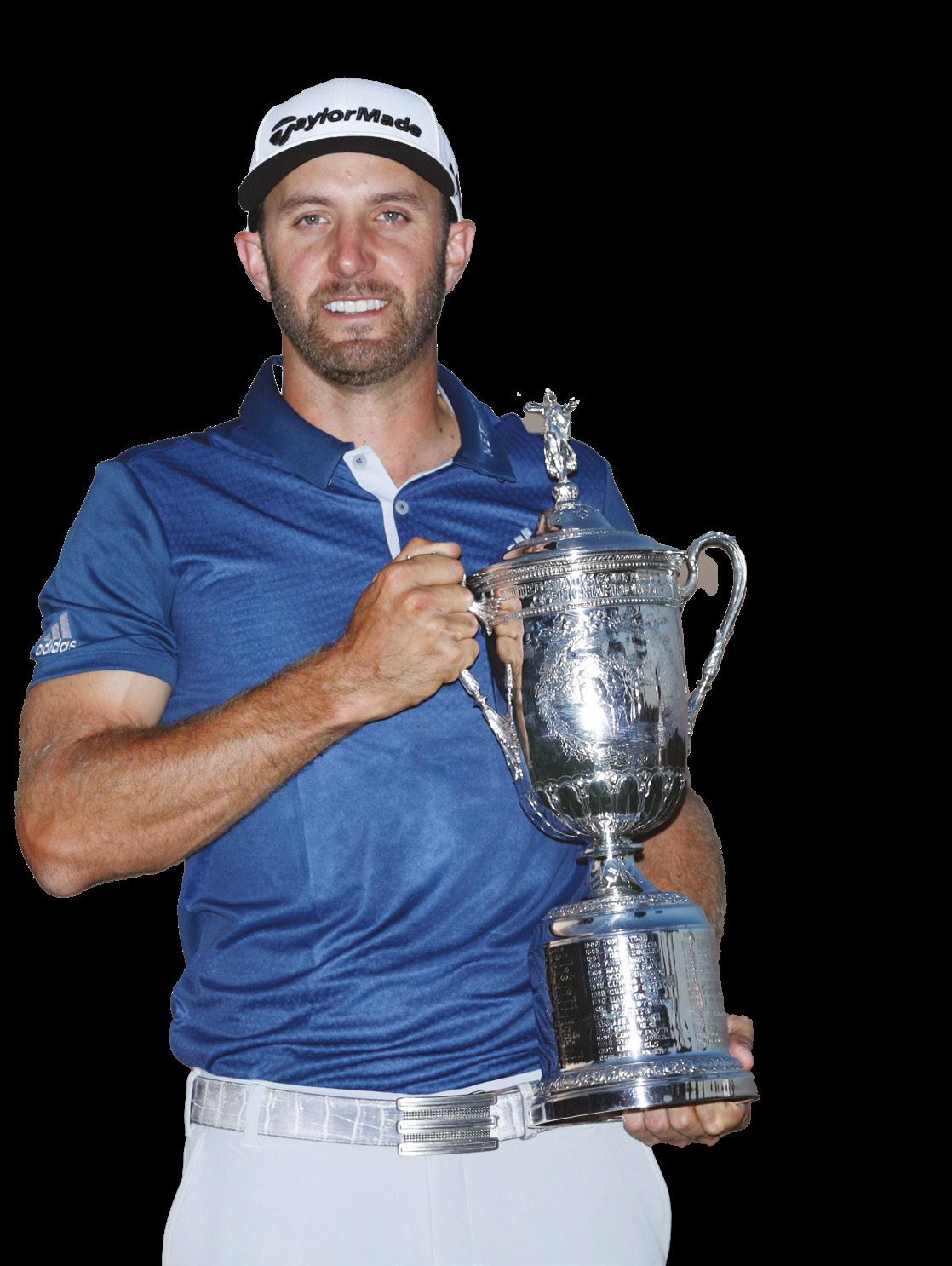



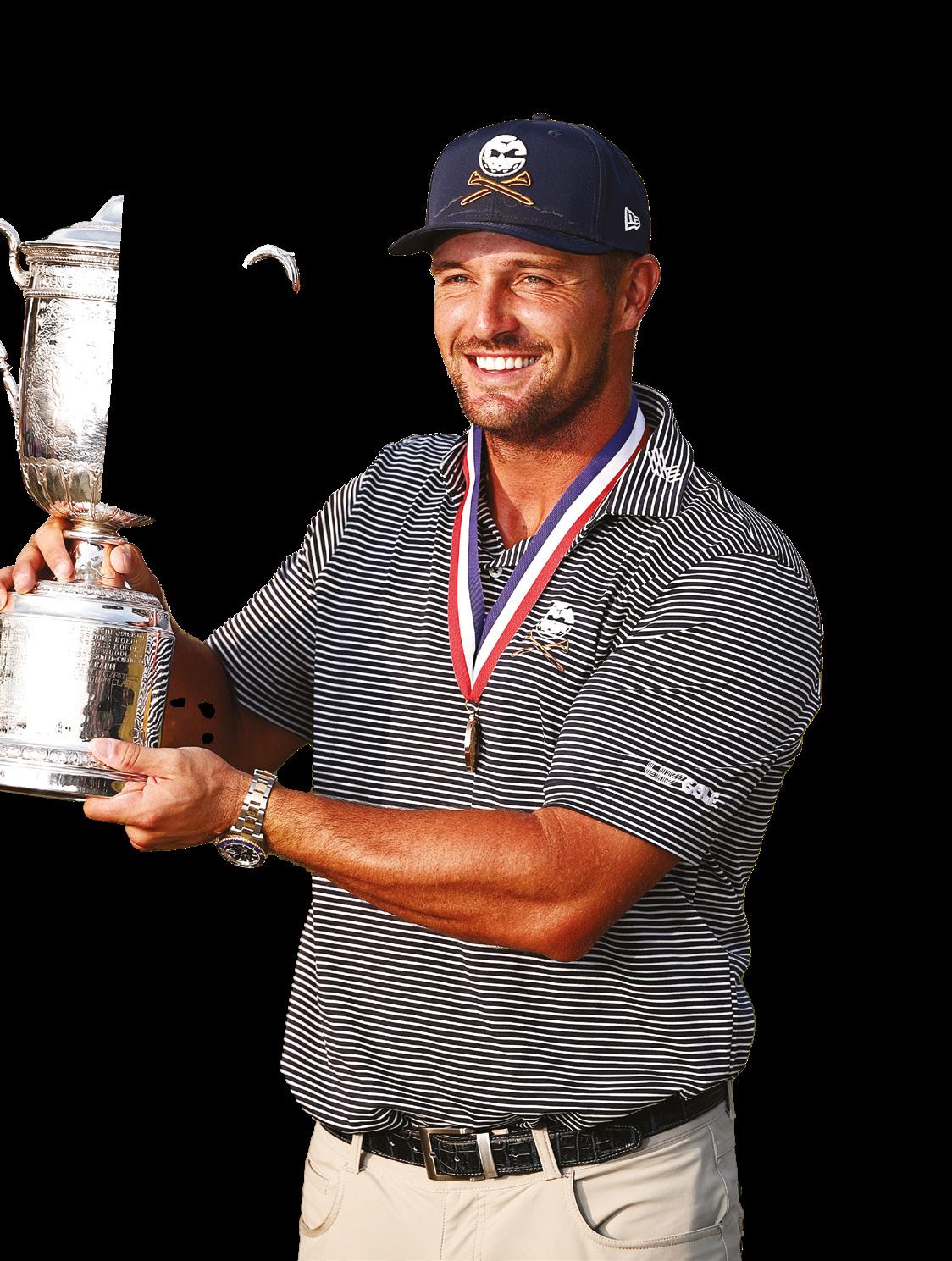
He may have had to wait until May for his first win of 2025 – securing the CJ Cup title after recovering from a freak hand injury over Christmas – but Scottie Scheffler is now firmly back in top form. The Texan added a third Major title to his illustrious resume last
month with a commanding victory at the PGA Championship.
Scheffler’s brilliance was on full display during a spellbinding six-under-par third round, highlighted by a stunning finish where he picked up five shots over the final five holes to
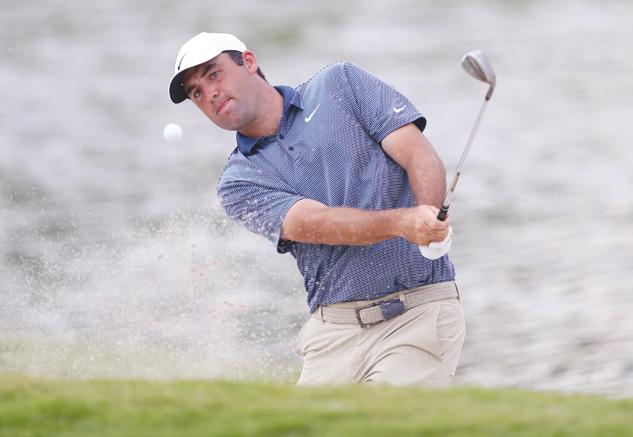
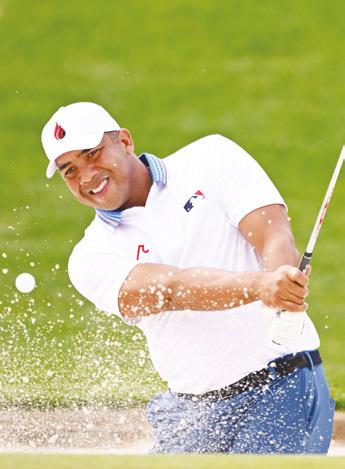
Fresh off his Masters victory, McIlroy struggled at Quail Hollow, despite his dominance at the venue over the years, missing the fairway left on 32.1% of his tee shots through the first two rounds – the worst among players who made the cut. The Northern Irishman finished the tournament tied for 47th at 3-over-par.
seize control of the tournament.
Amid the drama of Scheffler’s triumph, it was easy to overlook some of the other standout moments from an unforgettable week at Quail Hollow. But don’t worry – we’ve got you covered with our PGA Championship debrief.
Scheffler’s victory placed him alongside Jack Nicklaus and Tiger Woods as the only players since World War II to secure 15 PGA Tour wins, including three Major Championships, before turning 29. He also became only the third current ranked World No.1 to lift the Wanamaker Trophy, following Woods (2000, 2006, 2007) and Rory McIlroy (2014).
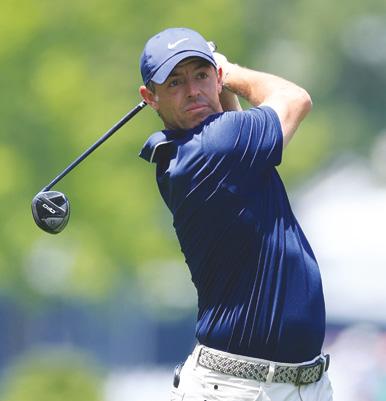
Jhonattan Vegas became the tenth player aged 40 or older to lead outright after the first two rounds of a Major Championship since the inaugural Masters in 1934. However, like eight of the previous nine, he couldn’t maintain his lead, eventually finishing tied for fifth – a careerbest Major finish.
Si Woo Kim’s hole-in-one on the 252-yard, par-3 sixth hole in the second round was the longest ace carded in Major Championship history. He also became only the second player in the last 30 years – alongside Ernie Els – to notch aces at both The Open and the PGA Championship.


Since becoming the oldest winner of a Major at the PGA Championship in 2021, Phil Mickelson has missed the cut in nine of his 14 starts with the latest of those coming last month in North Carolina. The American also recorded the first quadruple bogey of his PGA Championship career, occurring on his 2,117th hole played in the tournament.

Scheffler’s victory extended the streak of American victories at the PGA Championship to 10 consecutive years, the longest since the 1980–1989 run. The last non-American to taste success was Jason Day in 2015.
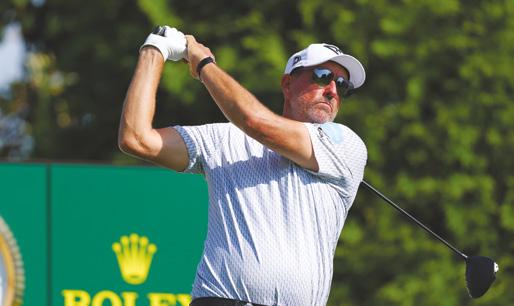
Quail Hollow’s notorious closing stretch, the “Green Mile,” lived up to its reputation. The 16th, 17th, and 18th holes ranked as the third, second, and most difficult holes of the week, respectively. Champion Scottie Scheffler played the hole at 1-over-par for the week, while World No.2 McIlory played the stretch at 6-over-par over his four rounds.
Despite entering the week ranked 175th on the PGA Tour in bogey avoidance, Matthieu Pavon went on a 29-hole run without a blemish on his card between round one and three. Unfortunately for the Frenchman, four bogeys and two doublebogeys in the final round dropped him from outside the top ten to a share of 41st at 2-over-par.
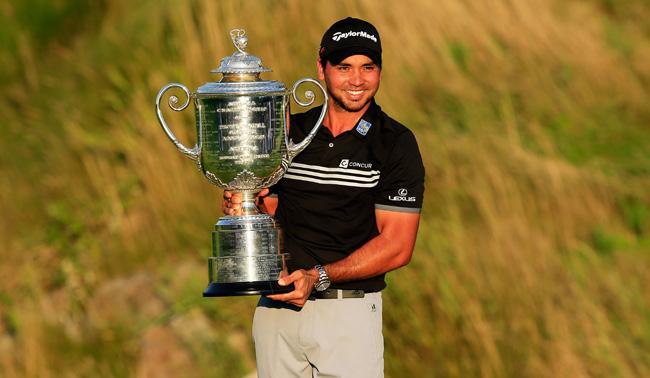
Despite only featuring in six editions of the PGA Championship, Scheffler tied the record of most rounds of 65 or lower at the tournament thanks to his third round 65 at Quail Hollow. The American is now tied with Adam Scott, who has had played in 25 editions of the tournament.

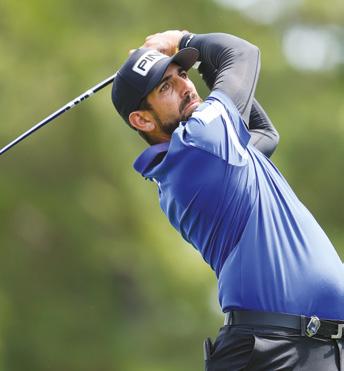
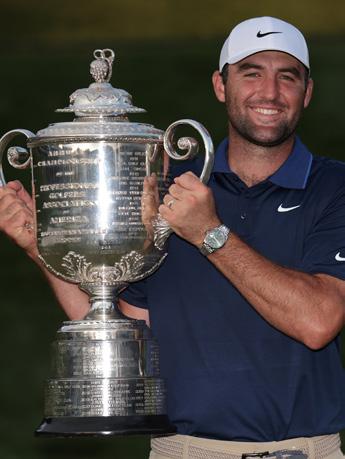
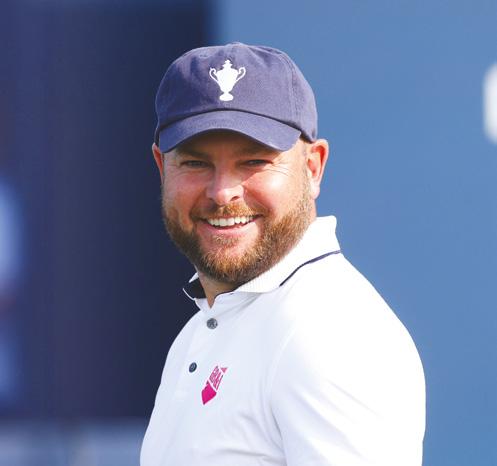

“They don’t want any under par scores”
Jordan Smith is eagerly anticipating the U.S. Open after topping Final Qualifying at Walton Heath. The Englishman will be joined by Guido Migliozzi, Frederic Lacroix, Joakim Lagergren, Sam Bairstow, Ryder Cup Vice Captain Edoardo Molinari, Jacques Kruyswijk, and Andrea Pavan. The latter three secured their places in dramatic fashion, emerging from a six-man playoff.
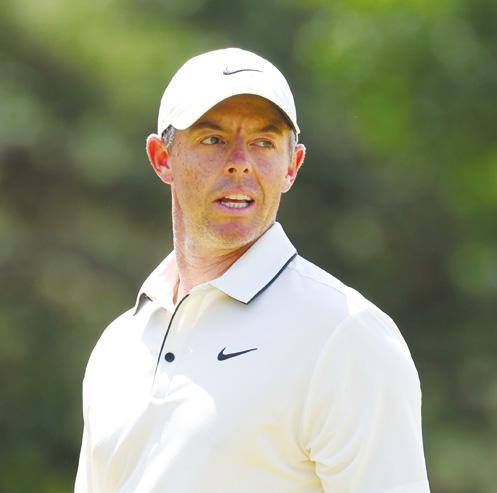

“There is tremendous potential to grow golf further”
Grand Slam winner Rory McIlroy expressed his excitement about confirming his participation in the $4 million DP World India Championship, marking his debut in the country during his illustrious career. Co-sanctioned with the Professional Golf Tour of India (PGTI), the tournament boasts the largest prize fund ever offered for a DP World Tour event in India.
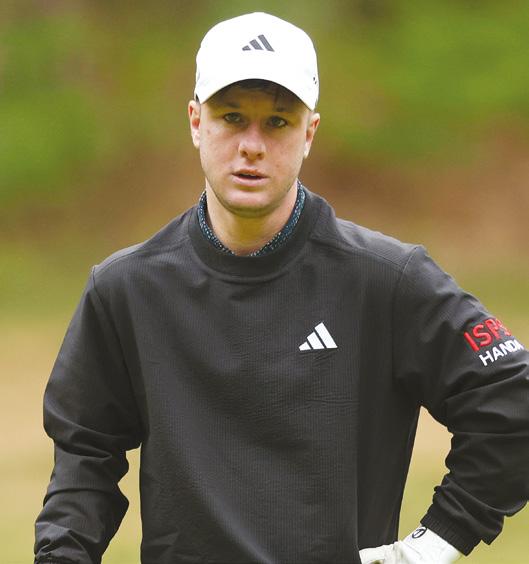

“It feels unbelievable”
Brendan Lawlor was ecstatic after securing his second Men’s G4D Open title at Woburn. The Irishman posted a 54-hole total of three-over 219, finishing four strokes clear of Lachlan Wood. Meanwhile, Daphne Van Houten celebrated her own success, successfully defending the women’s title she claimed last year.
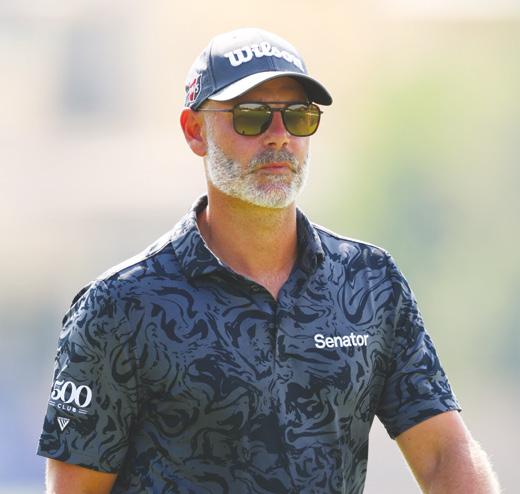

“Nobody is immune, bullet proof from mental health”
Paul Waring opened up about the psychological challenges he faced during the Covid-19 pandemic in a DP World Tour feature published last month to mark Mental Health Awareness Week.


The DP World Tour had a standout evening at the annual Middle East Sport Industry Awards, the region’s premier accolades for the sports industry, earning two Gold Awards for Major Event of the Year and Excellence in Sustainability. The 2024 DP World Tour Championship secured the Gold Award for Major Sport Event of the Year. This category recognises exceptional sporting events in the Middle East that excel in execution,
impact, and legacy. The tournament attracted a record-breaking number of spectators for a golf event in the UAE, driven by an innovative marketing strategy and fan-focused initiatives. Notably, female spectators accounted for a record 29% of attendees, while over 30% of ticket purchasers were international visitors, underscoring the event’s role in boosting Dubai’s tourism.
The Excellence in Sustainability award celebrated the Tour’s Green Drive program, which showcased its commitment to sustainable practices. Judges praised the innovative measures, including the introduction of a hybrid solar and hydrogenpowered hospitality unit at the DP World Tour Championship and a groundbreaking platform for ticketholders to calculate and offset their travel emissions—a first in the sporting world.

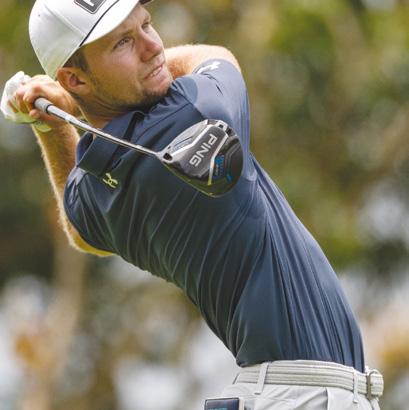

Ryan Fox secured his maiden PGA Tour title in dramatic fashion with a play-off victory at the ONEflight Myrtle Beach Classic.
The Kiwi closed with an impressive 66 to set the clubhouse target at 15 under. Canadian Mackenzie Hughes, holding a one-shot lead heading up the final hole, faltered with a wayward tee shot,
Continuing to impress on both sides of the Atlantic since his graduation from the HotelPlanner Tour last season, Neergaard-Petersen topped the leaderboard at Bent Tree Country Club with outstanding rounds of 66 and 65 on the par71 layout.

SPANNING SIX COUNTING EVENTS ACROSS AS MANY COUNTRIES AND FEATURING TWO MAJORS IN BETWEEN, THE EUROPEAN SWING IS CURRENTLY UNFOLDING AS THE FOURTH OF FIVE GLOBAL SWINGS IN PHASE ONE OF THE 2025 RACE TO DUBAI.
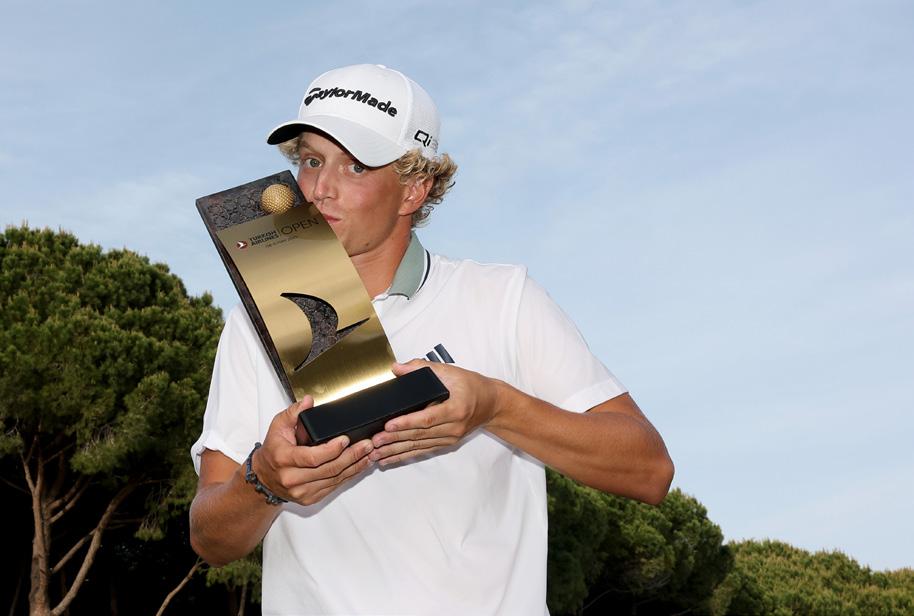
After a six-year hiatus, the DP World Tour made a triumphant return to Türkiye for the eighth edition of the Turkish Airlines Open. Regnum Carya, which had previously hosted the event from 2016 to 2018, once again provided a stunning backdrop for the tournament.
The week proved to be a memorable one for Martin Couvra, who continued his remarkable start to life on the DP World Tour by securing his maiden victory. The 22-year-old Frenchman, who graduated from the HotelPlanner Tour last season, had already posted four top-ten finishes this term, including a fifth-place showing at the Hainan
Classic in his previous start.
Couvra’s victory was sealed with a sensational final-round 64, giving him a 17-under-par total and a two-shot margin over China’s Haotong Li and Spain’s Jorge Campillo. It marked his first win as a professional in just his 15th start on the DP World Tour. The triumph added to his HotelPlanner Tour success at the 2023 Challenge de España, where he won as an amateur. The victory propelled him to eighth place on the Race to Dubai Rankings with 1,157.78 points, up from 27th, and also placed him atop the European Swing Rankings after the first of six counting events.
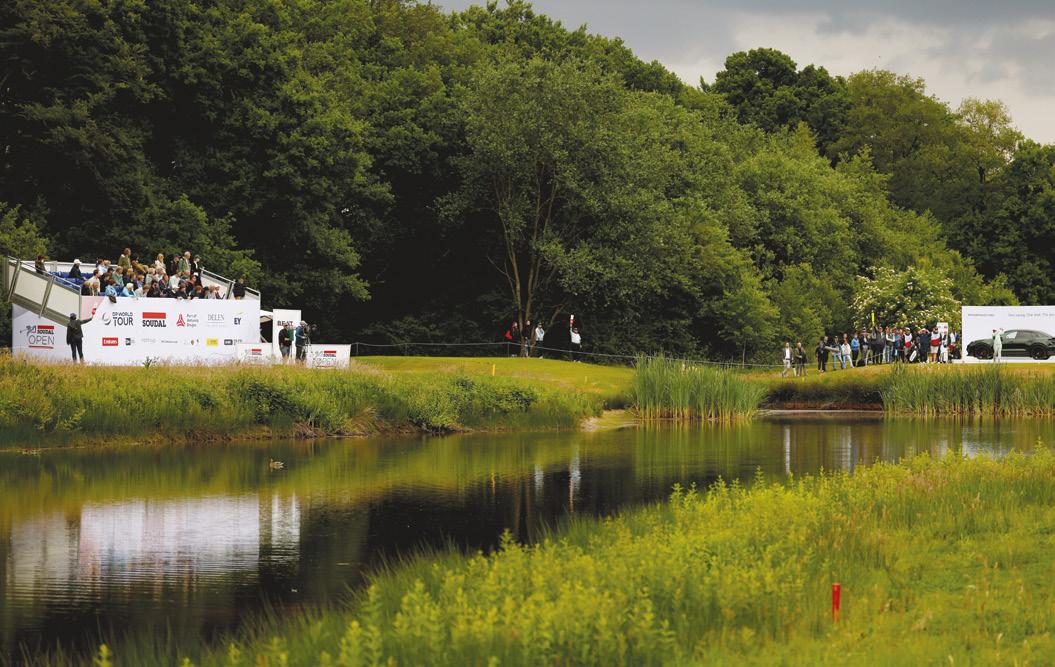
Following a brief pause in the European Swing for the PGA Championship, the DP World Tour returned to action in Belgium, where another first-time winner emerged.
Norway’s Kristoffer Reitan triumphed at the Soudal Open, holding his nerve in a play-off after firing a stunning courserecord 62 in the final round.
Reitan began the day a staggering nine shots behind overnight leader Ewen
Ferguson and teed off nearly three hours before the final group. His record-breaking round at Rinkven International Golf Club propelled him into contention, eventually tying Scotland’s Ferguson and the Netherlands’ Darius van Driel at the top of the leaderboard to force extra holes.
The drama continued in the play-off as all three players made par on their first trip back up the 18th hole. On the second

attempt, each player managed to hit their approach shots significantly closer to the pin. After Ferguson and Van Driel missed their birdie attempts, Reitan calmly sank a 15-foot putt to claim a remarkable victoryhaving started the day in 23rd place.
The win catapulted Reitan to the top of the European Swing Rankings and gave him a significant boost in the Race to Dubai standings, up 27 places to tenth.

KLM OPEN JUNE 5-8
Next up is a trip to the Netherlands for the 105th edition of the KLM Open, held at The International in Amsterdam.
Italian star Guido Migliozzi will return to defend his title, aiming to build on his success from last year. Joining him is fellow countryman and former Open Champion Francesco Molinari, making his first DP World Tour start of the season. This year’s tournament boasts a recordbreaking prize fund of €2,750,000,
the largest purse in the event’s history and the most significant in Dutch sport. Adding to the celebrations of the 105th staging of the tournament, Dutch football legend Ruud Gullit takes on the role of co-tournament director, sharing responsibilities with longstanding lead Daan Slooter. Gullit, an avid golfer and proud native of Amsterdam, steps into this role during the city’s 750th anniversary celebrations, providing a fitting tribute to both his hometown and his passion for the game.
MAY 29 - JUNE 1
The DP World Tour makes a welcome return to Austria with the Austrian Alpine Open presented by SalzburgerLand, marking the first visit to the country since 2021. Set against the picturesque backdrop of Henndorf am Wallersee near Salzburg, the tournament will be staged at the iconic Gut Altentann Golf Club. The venue holds a special place in European golf history as the first 18-hole course
on the mainland designed by the legendary Jack Nicklaus. Recently, the club underwent an extensive redesign to modernise the layout while staying true to Nicklaus’ original vision. This included a reconfiguration of the routing, with the finishing hole now placed directly in front of the clubhouse, ensuring an even more dramatic conclusion to the action. Ryder Cup Captain Luke Donald and Vice Captain Edoardo Molinari will both feature, while several Austrian amateurs will also get the chance to compete in their National Open.
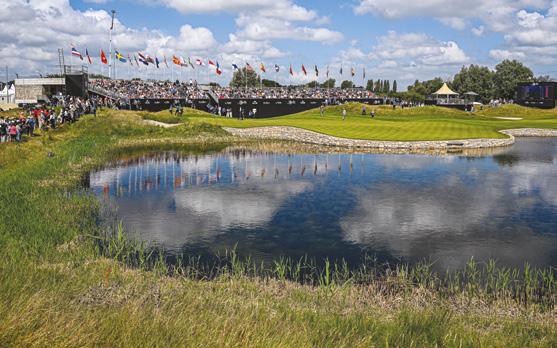

JULY 3-6
The final chance to earn points toward the European Swing Rankings comes at Golfclub München Eichenried for the 36th edition of the BMW International Open. This tournament holds a special place in German golf, with the home crowd set to rally behind local favorites Stephan Jäger, Martin Kaymer, and Matti Schmid. Kaymer remains the only German to have claimed victory at the event, while Jäger,
who grew up in Eichenried, will make a much-anticipated return to his hometown from his base in the United States. Ryder Cup Captain Luke Donald is back for a third consecutive appearance, while Sergio Garcia, twice a runner-up at the BMW International Open, will be eager to finally secure the title in his first start in Germany in three years. The Spaniard won’t be the only former Masters champion in the field, with Patrick Reed also returning after making his debut last season.
First played in 1925 and a mainstay on the DP World Tour since 1972, the Italian Open is a tournament rich in tradition. Next month, it returns to Tuscany for just the second time in its history. The 82nd edition will take place at Argentario Golf Club, the only course in the country to hold PGA National Italy status. This marks the first time the Italian Open has been staged in the region since Bernhard Langer’s victory at Golf Club Ugolino in
Florence in 1983. In addition to offering valuable Race to Dubai and Ryder Cup points, the tournament presents one of the final chances for players to secure a coveted spot in The 153rd Open Championship at Royal Portrush. As part of the Open Qualifying Series, two berths will be awarded to the highest-placed finishers not already exempt. Last year, Tom McKibbin and Sean Crocker earned their places at The Open through the event, highlighting its pivotal role in the journey to golf’s oldest Major.
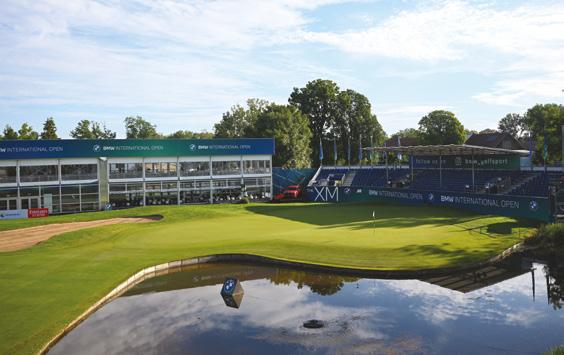

Back in the early 1990s, golf in the Middle East was little more than a curiosity. There were barely any courses, hardly any golfers, and few would’ve imagined the desert would one day become a global golfing hub. But while the game was still finding its footing in the region, Prosports International was already laying the groundwork. Amongst the first dedicated golf distributor and retailer in the region, Prosports International fuelled the developing golfing Tsunami that was to engulf the UAE and beyond. As the company celebrates its 30th anniversary, Worldwide Golf’s Rick Bevan sat down with the man who started it all. In this exclusive first-person feature, the founder of Prosports International, His Highness Sheikh Saeed Mohamed Hasher Al Maktoum, shares the story of how a casual round on a par-3 course at Dubai Creek Golf & Yacht Club inspired a business that was to shape the sport’s rise in the UAE.



Photography: Alex Leyno
eople often ask how I first got into golf. Truth is, it all started by chance. We used to visit Dubai Creek Golf & Yacht Club just for dinner. One evening, someone suggested we try the par-3 course. I liked it right away. I started playing with Ara Nakhnikian - my partner in Prosports International - and we were hooked. We weren’t any good at first; I remember scoring over 100 strokes. But we enjoyed it. That’s all it took.
I studied in America, but I never played golf there. It was a passion we discovered right here in Dubai. And that passion slowly turned into a business - Prosports International. At the time, golf was still in its infancy in the region, so looking back, it was a bold move. But we were just doing something we loved and in a sense we were lucky that things moved in the right way as far as golf’s development here, it could’ve gone the other way.
But Dubai has always been about looking
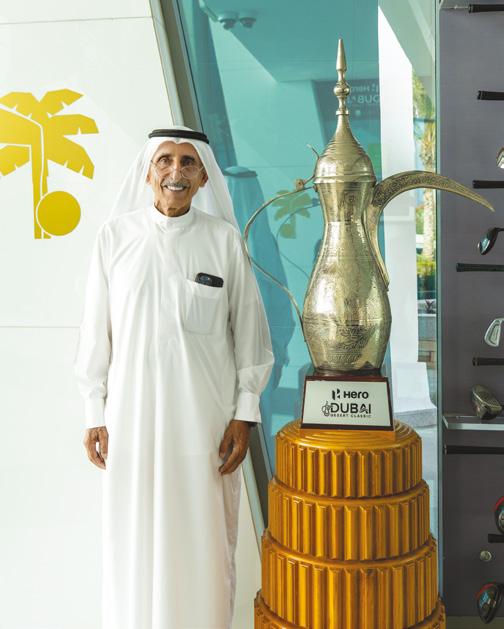
“WHEN WE STARTED, EMIRATES GOLF CLUB WAS LITERALLY IN THE MIDDLE OF THE DESERT. I COULD NEVER HAVE IMAGINED WHAT DUBAI WOULD BECOME. GOLF HAS PLAYED A HUGE ROLE IN THAT TRANSFORMATION. IT’S CLEAN, INTERNATIONAL, AND INCLUSIVE. YOU SEE KIDS AT TOPGOLF GETTING INTO THE SPORT - IT’S GROWING EVERY DAY. MY OWN DAUGHTER VISITS TOPGOLF REGULARLY.”
forward. Even back in the days of Sheikh Rashid, long before all the towers and skylines, this city had a vision. Dubai didn’t have much oil - Abu Dhabi had that - but what we had was trade. I still remember a time when Dubai was a hub for gold trading. You’d buy gold here, load it on a dhow, and ship it to India. No paperwork, no contracts - just trust and a handshake. That same
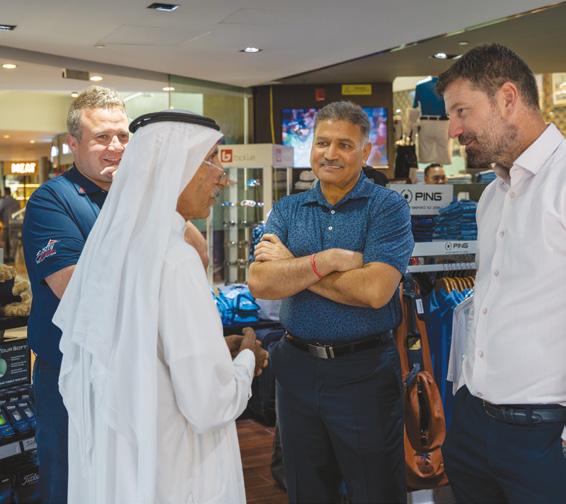


spirit shaped the way we built Prosports. We treat our customers and partners with respect and integrity. It’s the old way, but it still works. When we started, Emirates Golf Club was literally in the middle of the desert. I could never have imagined what Dubai would become. Golf has played a huge role in that transformation. It’s clean, international, and inclusive. You see kids at Topgolf getting into the sport - it’s growing every day. My own daughter visits TopGolf regularly.
One of the things I’m most proud of is how we’ve supported Emirati golfers from the very beginning. I remember playing with Ismail Sharif back in the day and supplying him with equipment - he was always a level above and went on to become the first professional Emirati golfer. We never did it for publicity. If we supported someone, it was always personal. You help because you care, not because you want credit. And now, you see players like Ahmad Skaik making history, making the cut on the HotelPlanner Tour.
That’s never happened before for a UAE National. It’s fantastic.
The golf ecosystem in the UAE has really matured and we now service many of the pros relocating to Dubai. They use our golf equipment and we support them virtually daily. It’s not just about business—it’s
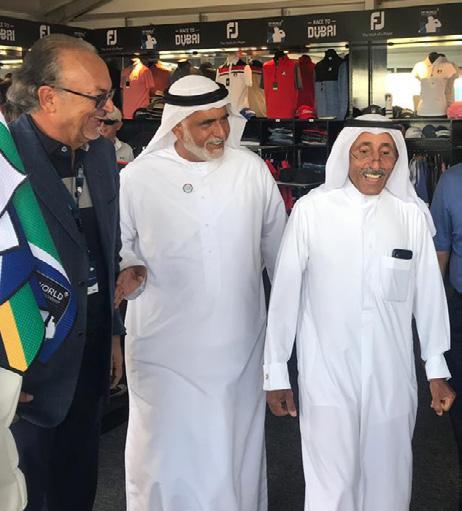
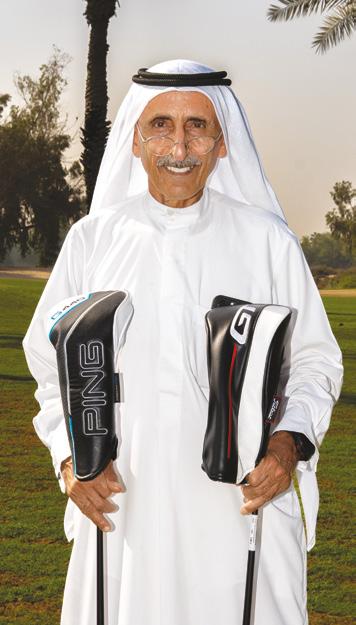
Ara Nakhnikian, Ismail Sharif and His Highness Sheikh Saeed Mohamed Hasher Al Maktoum enjoy a light hearted moment as they walk through the merchandise store at the DP World Tour Championship.
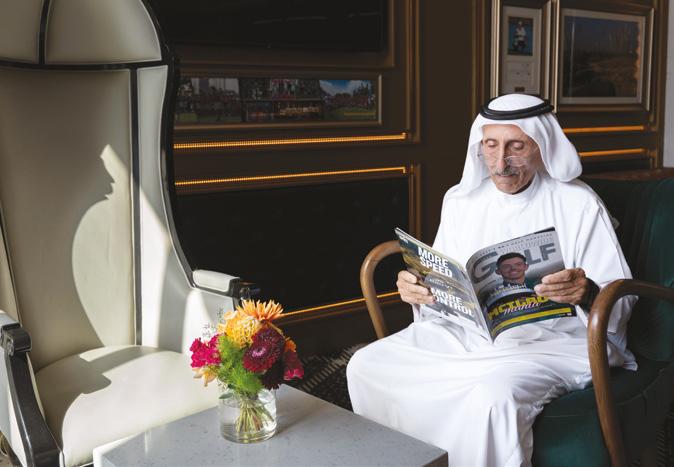
about growing the sport in a sustainable, meaningful way.
There was a turning point somewhere in 2011 or 2012 when the DP World Tour Championship almost left the city due to the economic crisis that was ongoing back then. That’s when we played a role in supporting the tournament organisers to secure its future in Dubai. Since then, it’s only grown stronger. The European Tour Group set up their base in Middle East under my sponsorship and we at Prosports supported them with everything in their initial days including all the infrastructure required to operate. They now have a thriving regional headquarters at Jumeirah Golf Estates and administer multiple events across the GCC and beyond from right here in Dubai. It’s wonderful to see and I’m proud that we were able to support that growth.
Our retail operation has also come a long way. Today, we manage several large Golf Superstores across the region, along with most of the pro shops at golf clubs in Dubai, the UAE, and Qatar. But it’s more than just sales; as partners, we bring significant sponsorship support, supplying equipment and uniforms for the entire staff. Ultimately, it’s about serving both the clubs and their customers—and that’s why we’re proud to be the largest golf business in the region, continuing to grow and evolve.
“MY PHILOSOPHY HAS ALWAYS BEEN SIMPLE: DO THINGS THE RIGHT WAY. NO SHORTCUTS, NO GREY AREAS. IT COMES FROM HOW THINGS USED TO BE DONE IN DUBAI—NO CONTRACTS, JUST RELATIONSHIPS AND TRUST.”
My philosophy has always been simple: do things the right way. No shortcuts, no grey areas. It comes from how things used to be done in Dubai—no contracts, just relationships and trust. Even now, I think the UAE is unique. Every nationality lives here together peacefully. Everything works. Bureaucracy is minimal. Renewing a visa takes a day. Getting a driver’s license is quick. That efficiency flows into every industry— including golf.
Looking ahead, Prosports will continue to grow steadily. We’ve built a strong track record, and we plan to maintain it. The golf landscape will keep evolving, and we’ll stay on top of new trends and technologies.
As for the next generation of entrepreneurs, my advice is simple: be honest, be consistent, and respect the people you work with. Dubai rewards hard work and vision.
And yes, on a lighter note, there’s a longstanding rumour that I once suggested putting crocodiles in the lake on the 18th hole at the Dubai Creek Golf & Yacht Club. Let’s just say we did once place a crocodile skin - about 15 feet long - by one of the water hazards, just for fun. It gave a few people a good scare!
Looking back, I’m proud of how far we’ve come - from par-3 laughs to helping shape Dubai’s golfing future. n
“If some you’ve tow scares


RICHARD MANSELL From SAS Skies to DP World Glory
By: Alex Gallemore


Photography: Getty Images
WRichard Mansell and his wife, Ellie, pose for a photo alongside their dog, Arnie during day two of the Alfred Dunhill Links Championship 2024 at the Old Course, St. Andrews.
hen Richard Mansell lifted the Porsche Singapore Classic trophy earlier this year, it wasn’t just the reward for another week of solid ball-striking. It was the product of a transformation that began not on the driving range—but 15,000 feet above it.
Yes, really. Just weeks before Singapore, Mansell took to the skies for a skydive—a fearless plunge at the urging of his new mindset coach, a former SAS soldier and one of the architects of S.A.S. Who Dares Wins. It wasn’t about swing tweaks or new putting drills. It was about facing his fears head-on, smashing the comfort zone that had held him back, and proving to himself that he was ready to handle anything.
And it worked. Five birdies in a row on Sunday, a calm that spoke louder than the leaderboard, and a first DP World Tour win that signalled he was done playing it safe.
But Mansell’s breakthrough wasn’t just mental. It was also about going back to what he knows and trusts— signing again with Titleist to bring stability and consistency to his game. Now, as he heads into the heart of the European Swing, Mansell’s future has never looked brighter—or more fearlessly focused.
“Turkey was a perfect example,” Mansell reflects on the weeks after his Singapore triumph. “I didn’t play my best golf, but I hung around. I was tidy on the greens, and by Sunday afternoon, I was in the mix.”
Winning in Singapore granted him the luxury of playing without the suffocating need to prove himself. For a player who admits to “wanting it too badly” in the past, the sense of freedom is priceless. “I’m no longer fighting for a job, which is a new position to be in,” he says, smiling. “And that changes everything. You’re not perfect every week, but you can still get the job done.”
Mansell’s rise in the game has always been fuelled by his prodigious power off the tee. But this season, he’s realised that birdies come not just from brute strength, but also from mental clarity. “You can’t worry about anyone else,” he says. “It’s all about creating your own small wins and stacking them up.”
That mental shift didn’t happen by chance. It was forged by an unlikely alliance with a mindset coach whose


CV includes service in the British Special Forces and a starring role in the TV series S.A.S. Who Dares Wins. Forget your traditional psychologist with theories and journal entries—Mansell’s new guide knows nothing about golf. And that’s precisely what makes him invaluable.
“He couldn’t get his head around the fact that I was scared of golf shots,” Mansell laughs. “He’s like, ‘Try being shot at on the front line.’”
The coach challenged Mansell to confront his fears head-on—quite literally. “A few weeks before Singapore, I was terrified of heights,” he admits. “He told me, ‘If you want something great, you’ve got to walk towards what scares you.’ So I did it. And it changed everything.”
That jump from the sky mirrored the backnine moments in golf—those times when the stakes are highest and the fear of failure can be paralysing. “I realised that if I wanted something great, I couldn’t shy away from it,” he says. “I had to walk towards it.”
The result? Five birdies in a row on the front nine of the final round in Singapore. “I wasn’t even aware that I did it,” Mansell says. “I got into that state of flow where everything felt effortless. It wasn’t luck—it was the work I’d put in.”
This new perspective didn’t just help him survive the pressure of a final-round charge— it redefined how he sees the game altogether. “We get paid to play golf,” he says simply. “If I miss a five-footer or lose a golf ball, it doesn’t matter in the grand scheme. That’s a big thing I’ve had to accept.”
Mansell’s transformation hasn’t been solely psychological. He’s also taken a fresh look at his equipment and technical approach. “I re-signed with Titleist this year,” he says. “Last year I was a free agent, and I messed around too much—trying new things, switching gear. I know what I’m like—I love shiny new things. But that can be a distraction. Signing back with Titleist gave me stability and took away that temptation to tinker.”
His work with a new putting coach has been equally impactful. “He got me away from being too technical and helped me understand how to train properly at home and at tournaments,” Mansell says. “It’s not about being perfect anymore. I’ve realised that I’ll always make enough birdies—I just need to be more professional and cut out the mistakes.”
It’s a lesson he sees echoed in the approach
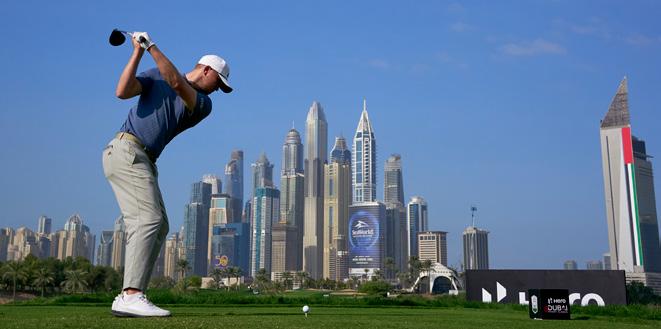

of the game’s best. “Look at Scottie Scheffler,” he says. “He didn’t play great at the USPGA, but he hung around and ended up winning by five. You’ve got to understand that it’s a marathon, not a sprint. Even when you’re not at your best, you’ve got to be smart.”
Helping him stay smart is a new caddie, whose experience has been invaluable. “He’s been out here a lot longer than I have,” Mansell says. “He’s caddied in a Ryder Cup, in Majors— he just says it how it is. He’s someone I respect, and that’s been huge for me.”
Together, they form a team that’s learning how to manage the highs and lows of the tour. “That first week in Singapore, he really helped me stay calm,” Mansell says. “It’s made me appreciate how big a role caddies play in our game.”
Away from the fairways, Mansell has found a fresh sense of stability—and it’s rooted firmly in Dubai. Living there with his partner Ellie and their dog Arnie, he’s discovered the perfect


blend of hard work and balance. “Living at Jumeirah Golf Estates has been massive,” he says. “I can jump in my buggy, be on the putting green in two minutes, and still be home for lunch.”
He’s not just content to rent either. “I’m looking to buy somewhere soon,” he says. “I’ve really come to appreciate my time at home, and Dubai has given me that chance to recharge and refocus.”
This newfound stability is something he’s determined to maintain. “Life on tour is intense—airports, travel, delays. But when I’m home, I’m not wasting time or energy. That’s been a huge part of my improvement this year.”
Despite his breakthrough in Singapore, Mansell remains grounded in the process. “Of course I have goals,” he says. “Winning was an amazing feeling, but it doesn’t just happen again because you want it to. You’ve got to go back, keep building those 1% gains and trust that they’ll add up.”
The biggest prize? A PGA Tour card—an ambition that burns bright for Mansell. “I think some of the courses out there suit me a bit more,” he says. “I’ve won now, I know what it takes to win, and I want to kick on. Getting into those end-of-year playoffs means you’re competing at the highest level, and that’s where I want to be.”
As the European Swing unfolds, Richard Mansell is no longer just another young pro chasing status. He’s a proven winner with the perspective of a skydiver and the calm of a Special Forces veteran. With the Singapore Classic as his springboard and Dubai as his sanctuary—both mentally and physically— Mansell has built a game, and a life, that’s ready for whatever comes next. n
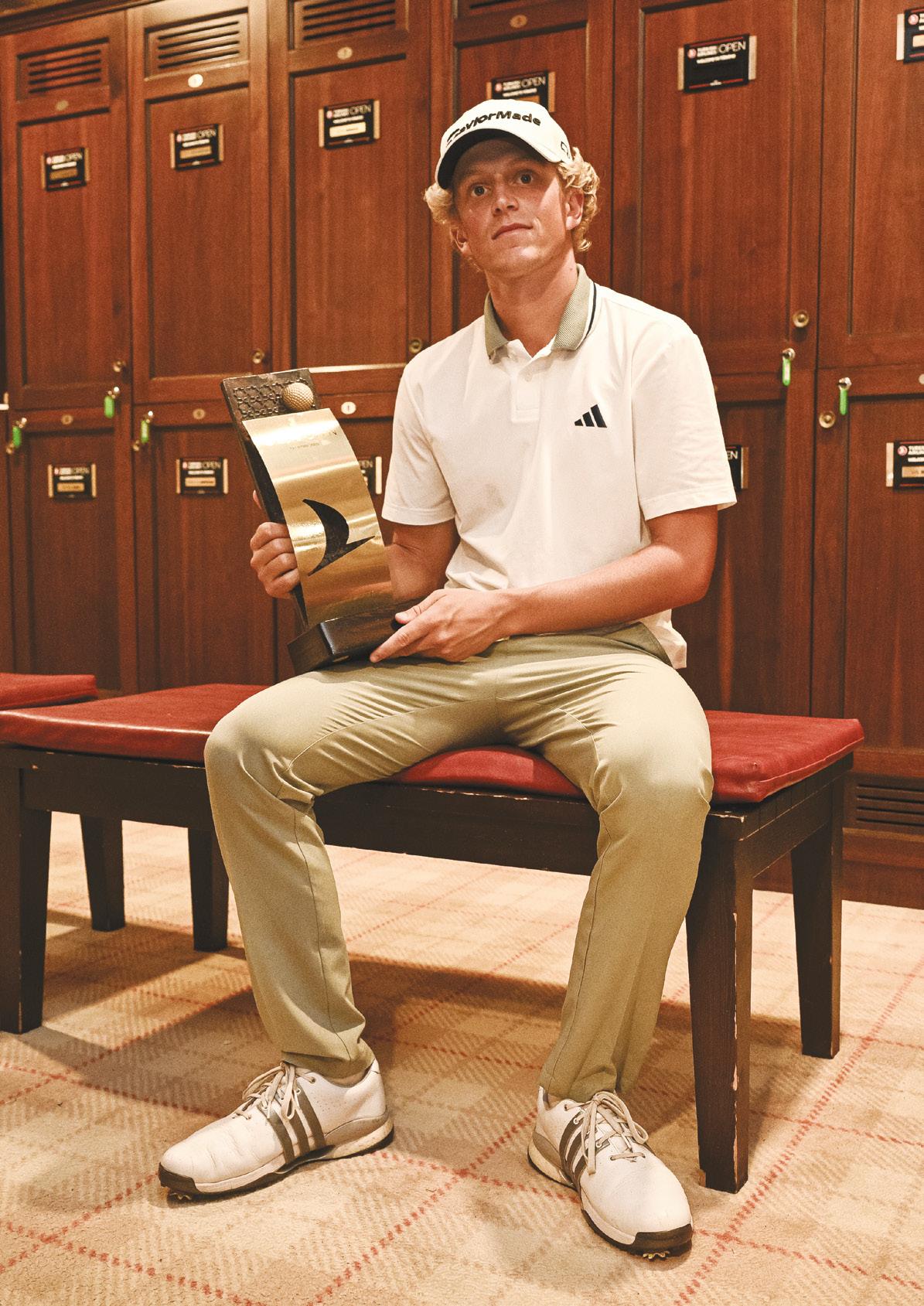


artin Couvra isn’t wasting time. In just a handful of starts on the DP World Tour, the 22-year-old Frenchman has already carved out a win, cracked the top ten of the Race to Dubai, and booked a ticket to some of the biggest events in world golf.
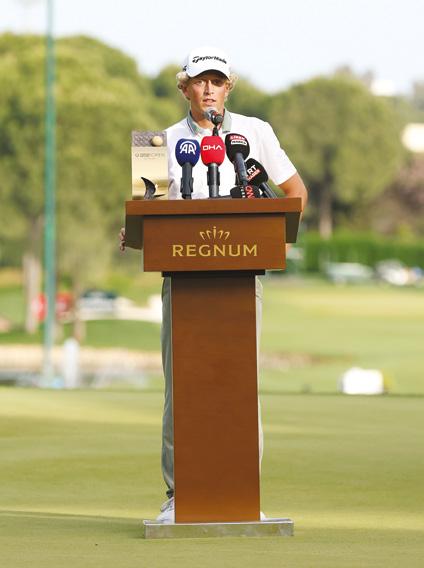
His victory at the Turkish Airlines Open wasn’t just a landmark moment—it was a message to the rest of the field: this rookie is no passenger. With three top-10 finishes already to his name, Couvra’s rookie campaign has transformed into a campaign of serious consequence.
“I’ve always dreamed of playing in events like Wentworth and the Scottish Open,” he said. “To be heading there this season is so exciting. These are events I grew up watching on TV.”
And he’s not just making up the numbers. Couvra’s win in Turkey guaranteed his place in the second half of the season’s calendar—dubbed the “Back 9” by the DP World Tour—and with it, a chance to make a serious push for the Play-Offs.
The restructured format of the Tour now culminates in a two-event finale in the UAE, with the top 70 on the Race to Dubai teeing it up in Abu Dhabi, followed by the top 50 heading to Jumeirah Golf Estates for the DP World Tour Championship. For a first-year pro, that’s heady stuff.
“To play in the final in your first season, that’s huge,” said Couvra. “I’m doing everything I can to be there. It would be such a good achievement.”
And if current form is anything to go by, he’s not just knocking on the door—he’s already halfway through it. Couvra’s ability to handle pressure, stay calm in contention, and execute with maturity has stood out, particularly in an era where young talents are expected to break through fast or risk getting left behind.
He’s also part of an emerging French contingent that’s injecting fresh energy into the European scene. With the likes of Victor Perez and Matthieu Pavon blazing trails in recent seasons, Couvra
By: Alex Gallemore
“Having French players out there doing well is inspiring,” he added. “We all push each other. And with the Olympics coming to Paris next year, it’s a big motivation.”
represents the next wave—only he’s doing it even quicker than most predicted.
“Having French players out there doing well is inspiring,” he added. “We all push each other. And with the Olympics coming to Paris next year, it’s a big motivation.”
For now, Couvra is fully locked into the European Swing, the fourth of the DP World Tour’s five Global Swings, and he’s got his eye on the leaderboard there, too. A Swing win comes with added Race to Dubai points and prestige, not to mention an extra injection of confidence heading into the business end of the season.
“It’s my continent, my people,” he said. “Winning on home soil would mean even more. I want to keep building momentum.”
And build he has. Regnum Carya might’ve been the scene of his breakthrough, but his consistency across various tracks has shown that his game travels. Whether it’s fast fairways or soft greens, coastal breezes or parkland rough, Couvra seems to have an answer—and a plan.
Off the course, he’s still adjusting to life at the top level. The pace is faster, the spotlight brighter, and the competition fiercer. But if he’s fazed, he’s not showing it. Instead, there’s a quiet focus behind his soft-spoken interviews and youthful energy.
“This season has already given me more than I imagined,” he said. “But I know there’s a long way to go, and I want to make it count.”
There’s plenty of golf still to play, but make no mistake—Martin Couvra isn’t here for the experience. He’s here to contend. He’s here to win. And if he keeps trending the way he has been, don’t be surprised to see his name in bold on the Dubai leaderboard come November.
COMEBACK OF A QUIET FIGHTER


By Alex Gallemore

FROM WENTWORTH GLORY TO WRESTLING WITH INJURY AND ANXIETY, CHRIS WOOD OPENS UP ON HIS ROAD BACK TO THE DP WORLD TOUR


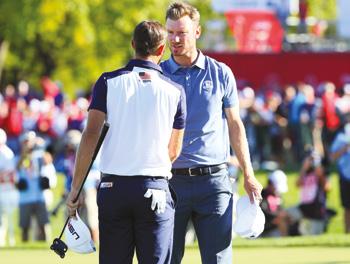
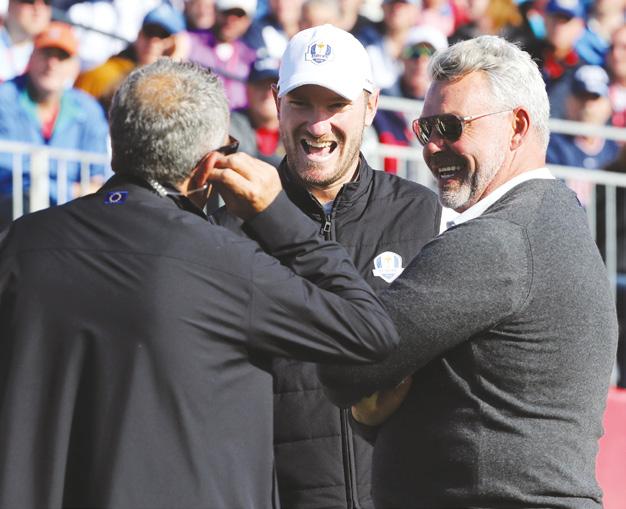
All smiles despite being disappointed to only play in two
during
His wife Bethany has been a vital support to him during the tough times.
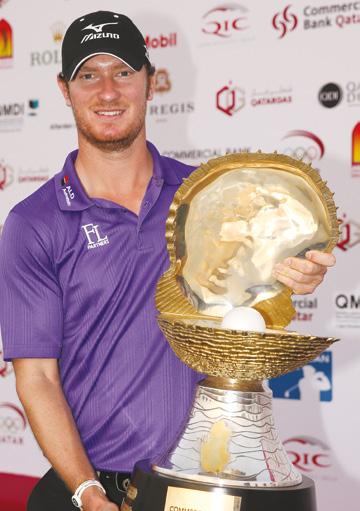


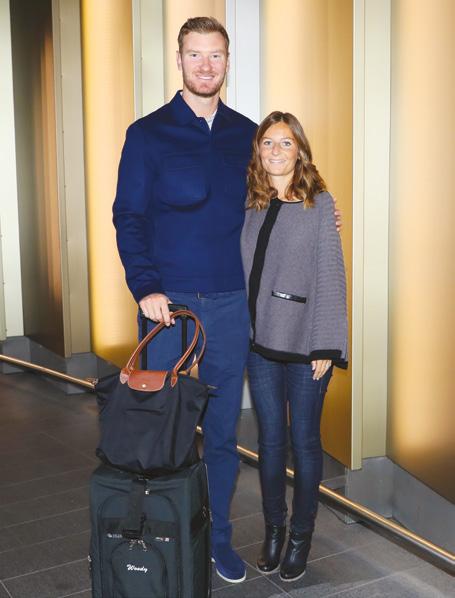
By the time Chris Wood hoisted the trophy at Wentworth in 2016, he wasn’t just celebrating a win—he was fulfilling a dream shared by just about every player on the DP World Tour. The BMW PGA Championship isn’t just another event; it’s the event. And for Wood, that moment cemented a feeling he’d long known: he belonged at the top.
“If you ask most players, Wentworth is probably the No.1 outside the Majors. To have that trophy at home... yeah, that feels amazing.”
But even as he stood atop the leaderboard, Wood says his game had already begun to falter. His swing started to lose the sharpness he’d worked so hard to build, and over the months that followed, that form slipped further from his grasp. Eventually, injuries and a deteriorating relationship with the game would sideline him for years.
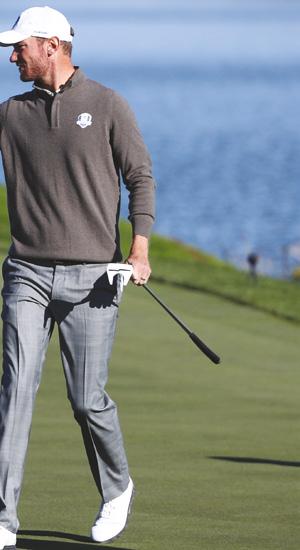
His first taste of Ryder Cup action saw him pair up with Justin Rose for a 1-up victory against Jimmy Walker and Zach Johnson the Saturday Foursomes.
The whispers started long before the comeback. For a BMW PGA champion and Ryder Cup player to vanish from leaderboards, the inevitable question followed him like a shadow.
“That’s probably the thing I’ve found hardest—people asking, ‘Have you retired?’ Or, ‘What are you doing these days?’ It winds me up. I never stopped being a golfer. I just couldn’t play.”
The frustration, he admits, came from a place of pride and pain. But over time, Wood realised those awkward conversations weren’t meant to offend—they were signs people still cared.
“I need to respond better. People are genuinely interested, and I should be grateful. My wife tells me I come across rude sometimes—I don’t mean to. I’ve just been in a difficult place.”
Ironically, it was during this forced absence that Wood rediscovered his love for the game—not by playing, but by watching. The hunger came creeping back through TV broadcasts and major moments.
“It’s weird. I couldn’t face playing, but I found myself watching more. And part of me would think, ‘I can still hit that shot.’ That hunger came back.”
Yet when he finally returned to tournaments, a new challenge emerged: the locker room was full of strangers.
“I flew to Qatar last year and didn’t recognise a single player. This is my third event back and I’m still playing with guys I’ve never met.”
Wood’s Ryder Cup experience in 2016 was, in his words, a disappointment—mainly because Team Europe came up short. Despite strong form, he played fewer matches than he’d hoped.
“I felt like I was playing well enough, but after we went 4-0 down on Friday morning, Clarke turned to experience. I didn’t get the chance to find rhythm with my own ball.”
He was sent out in the singles against Dustin Johnson and lost narrowly—something he partly attributes to not playing a fourball to that point. Still, a handwritten letter from captain Darren Clarke arrived a month later.
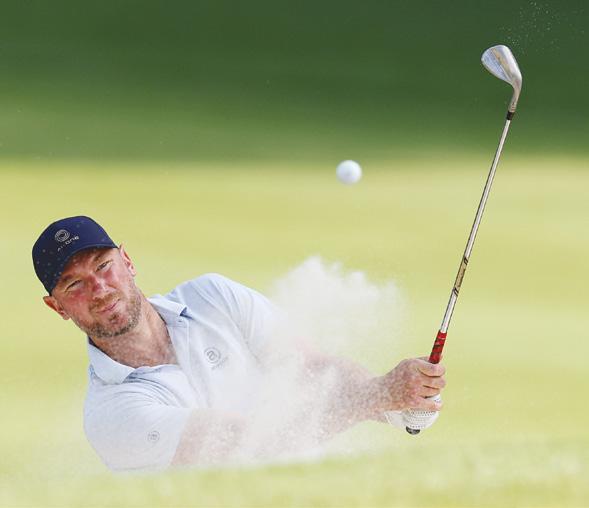
“It said he was proud of me. I’d have rather played more matches than received a letter, but it was a classy gesture and it sits proudly at home.”
Wood isn’t just fighting to rediscover form—he’s fighting for starts. With no full Tour card, he’s reliant on invites, which adds another layer of pressure.
“The result in Turkey was a boost, but it’s just a fifth of the job. My goal is to get my card back. But if the invites dry up, I’m stuck.”
Still, he’s doing everything in his power to stay sharp.
“Even if I get a call on a Monday night, I’ll be ready. I’m working hard in practice and managing my anxiety better. Each week I feel more equipped.”
His strength isn’t brute force—Wood has never been the guy to bomb it 320 yards. But he knows how to plot his way around a course. Golfing IQ, he says, still matters.
“Everyone’s obsessed with distance, but there are more ways to win. My strengths aren’t the same as a 21-year-old’s, but I’ve got tools they don’t.”
These days, staying physically able is a full-time job. Twice-daily back routines and ice-cold swims in ponds near tournaments are just part of the deal.
“I’ve learned to manage it well over 15 years. People don’t see what it takes just to get moving in the morning.”
Mentally, he’s made peace with the struggle—and wants others who are suffering to know they’re not alone.
“Unless you’ve been there, you don’t understand. But if you’re struggling and you can talk to someone—even just one friend—that’s a huge step. That takes real bravery.”
There’s no delusion here—Wood knows what he’s up against. But there’s also no surrender. He’s tasted the best of it, and he’s not done yet.
“I need a little help now—invites, opportunities—but I’m OK with that. I just hope people remember what I’ve done in the game and give me a shot.”
Chris Wood hasn’t retired. He’s just getting started again.
“The result in Turkey was a boost, but it’s just a fifth of the job. My goal is to get my card back. But if the invites dry up, I’m stuck.”


By Alex Gallemore
If Dublin’s golf scene is famed for its links heritage, Liverpool gives it a proper run for its money—especially when you factor in four of the finest courses England has to offer, all within a 45-minute drive of the city centre. Add in the Beatles, brilliant pubs, riverside hotels, and some seriously good grub,
and you’ve got yourself a golf holiday that strikes all the right chords.
Whether you’re escaping the summer heat or planning a UK golf road trip, Liverpool’s coastal belt along the Merseyside coast is loaded with world-class golf—and you don’t need a ferry to find it.



When it comes to golfing royalty, Royal Birkdale is top of the Mersey pile. Opened in 1889 and redesigned in the 1930s, it has hosted 10 Open Championships, including Jordan Spieth’s dramatic 2017 win. Situated in Southport, just 30 minutes from central Liverpool, it’s known for its imposing
dunes, flat fairways and fair, honest layout.
Unlike some traditional links, Royal Birkdale doesn’t rely on blind shots or quirky bounces. Instead, it’s a course that rewards precision and bravery. The 13th is arguably the most iconic—a demanding par 4 that doglegs through dunes and
plays straight into the prevailing wind. The closing stretch is brilliant, especially with the famous white art-deco clubhouse looming in the background.
“It’s my favourite Open venue,” said Spieth. “It’s tough but fair, and every hole demands a great shot.”

Royal Liverpool, affectionately known as Hoylake, is a course steeped in major history. First opened in 1869, it has hosted The Open 13 times, including Rory McIlroy’s memorable 2014 win and Brian Harman’s dominant 2023 triumph. Set on relatively flat terrain, the real challenge
comes from the coastal winds and clever bunkering. The 17th—introduced in the latest Open redesign—is a wicked short par 3 with a tiny green surrounded by swales and disaster. The par-5 18th provides a thrilling finish with out-of-bounds running the length of the hole.
“The wind can make you look foolish out here,” McIlroy once said. “But when you play well, it’s pure links joy.”
Hoylake is just 25 minutes from Liverpool city centre, making it a must-play for anyone visiting the region.


One of England’s most unique championship courses, Formby Golf Club offers a blend of classic links and tree-lined inland holes, thanks to its setting among towering pines and rolling dunes. Founded in 1884, it’s hosted numerous Amateur Championships and stands proudly among Britain’s top 20 tracks.
The variety in routing is what makes Formby special. The front nine is more classically links-style,
while the back nine weaves through forest, offering a contrasting feel but equal challenge. The par-3 7th, with its elevated tee and small, protected green, is a highlight.
“Formby’s a gem,” says Paul McGinley. “It tests every part of your game without ever feeling unfair.”
The club also boasts a highly regarded women’s course and has a reputation for its warm welcome and well-conditioned fairways.

Sitting right next door to Birkdale, Hillside is often described as the best course never to have hosted The Open—though it has staged the British Masters, Amateur Championship, and Final Open Qualifying.
The back nine, rebuilt in the 1960s, is frequently hailed as among the best in Britain. With dramatic elevation
changes and views across the Irish Sea, holes like the 11th and 14th offer stunning vistas and demanding tee shots.
“The back nine is as good as anything in championship golf,” said Greg Norman. It’s not just hype—Hillside’s conditioning and clever design make it one of the true unsung heroes of English links golf.


For golfers who want to stay central and enjoy Liverpool’s culture as much as the courses, base yourself near the waterfront. Hope Street Hotel offers modern luxury in the Georgian Quarter, while the Malmaison down by Princes Dock serves up boutique chic with a great cocktail bar. For something iconic, try the Titanic Hotel, set in a converted warehouse with loads of character.
If you’d rather stay closer to the courses, Southport has plenty of options including The Vincent Hotel, a golfer-friendly favourite with spa treatments and secure club storage.
You’ll need to refuel, and Liverpool delivers. Book a table at Panoramic 34 for fine dining with stunning skyline views, or The Art School for seasonal British cuisine in a grand Victorian setting. For laid-back eats, Maray on Bold Street is a local gem offering mezze-style dishes with bold flavours.
Closer to the golf trail, Southport’s Bistrot Vérité and Bistro 21 serve up French-inspired fare perfect after a day on the links
Make time to explore Liverpool’s legendary attractions. Visit The Beatles Story, stroll the Albert Dock, or catch a match at Anfield if the Reds are playing. The city’s museums and galleries are top-tier, and there’s no shortage of live music or nightlife if you fancy swapping birdies for Beatles.
Liverpool’s golf scene punches way above its weight. From Open-hosting giants like Birkdale and Hoylake to hidden heroes like Hillside and Formby, it’s a coastal cluster of world-class golf wrapped up in a city packed with personality.
Pack the waterproofs, bring your A-game, and get ready for a golfing break that’s anything but ordinary.


By Rick Bevan


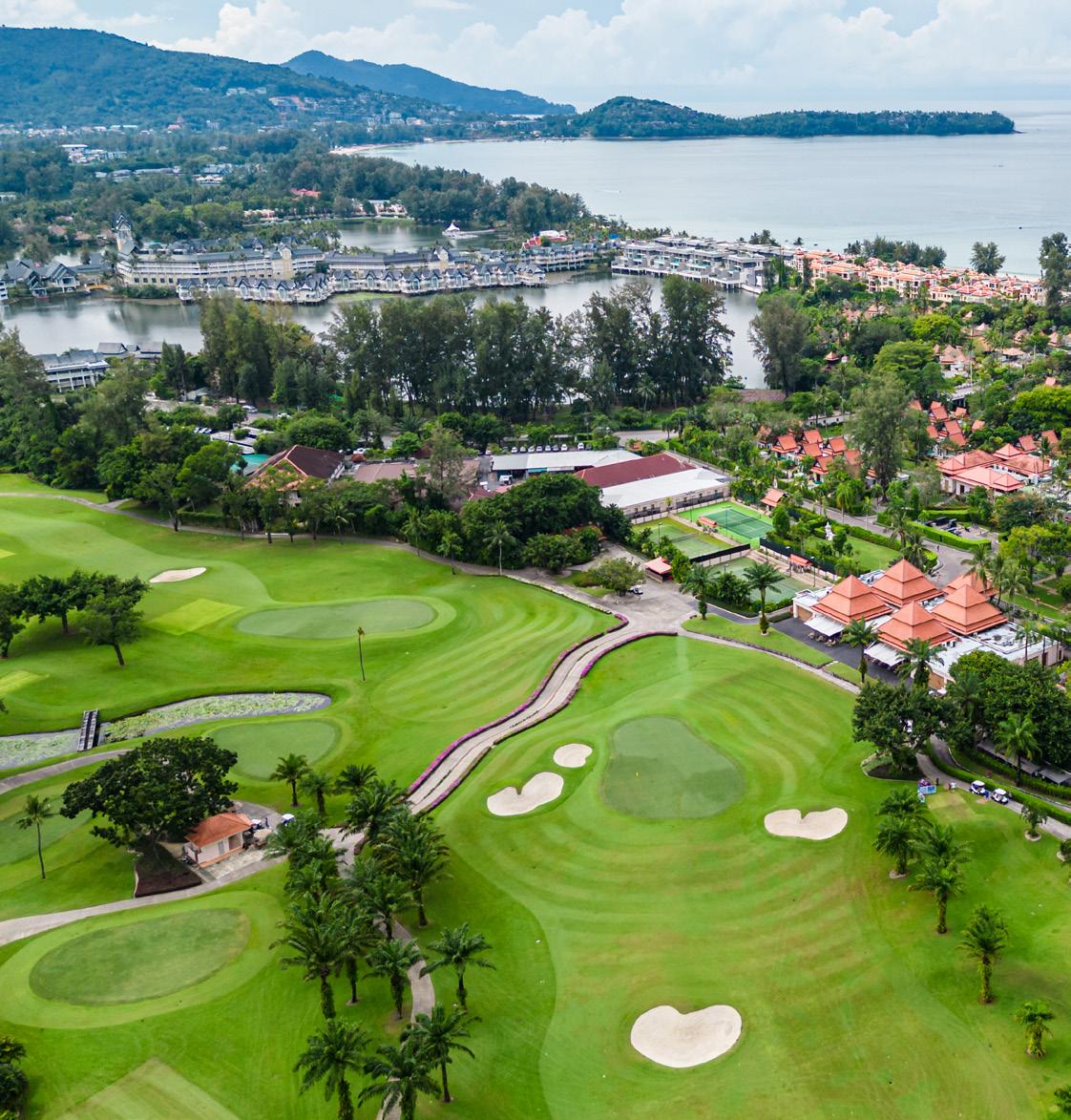
hailand has long been a favourite getaway for golfers from the GCC – short flight, warm hospitality, and sunshine pretty much guaranteed. And when it comes to combining world-class golf with full on tropical luxury, Laguna Golf Phuket has you covered.
Set in the heart of the 1,000-acre Laguna Phuket resort – Asia’s first integrated destination resort – this 18-hole, par-71 course is surrounded by lagoons, coconut groves, and the mountainous backdrop of Phuket’s west coast. It’s postcard stuff, but it’s no pushover.
I stayed at Angsana Laguna Phuket, one of six hotels
on site, and it’s exactly what you’d want after a day spent trying to avoid the drink. A dip in the giant pool, a sensational massage at the Angsana Spa, and dinner options ranging from laid-back to Michelin Plate-level indulgence. More on that later.
From the moment you pass the Laguna shaped hedge at the entrance, you know you’re in good hands. Caddie culture is alive and well in Thailand, and I was paired with Eid – a sharp, hilarious veteran of the game with a laugh that could carry across the Andaman Sea and putting reads that bordered on witchcraft.
The course itself runs 6,775 yards off the back tees, and water features heavily – very heavily. By the third hole, I was already asking Eid, “More water?” She laughed and replied, “Back nine better.” It was, but only marginally.

The front nine winds through lush, tropical terrain with tighter fairways and plenty of trouble. The back nine opens up slightly, with coconut groves and sweeping sandy runoffs. Both loops are framed by some seriously stunning natural scenery.
The course, originally opened in 1992 and redesigned by Paul Jansen in 2015, was named “Best Renovated Golf Course in Asia” that same year. It’s since picked up multiple awards, including “Best Golf Course in Thailand” (World Golf Awards), and even hosted the Asian Tour’s Laguna Phuket Championship and the 2024 WAGC World Final. It’s also home to Southeast Asia’s only PGA Academy, offering everything from beginner lessons to serious game-improvement sessions with TrackMan analysis. A proper facility if you’re serious about shedding a few shots.
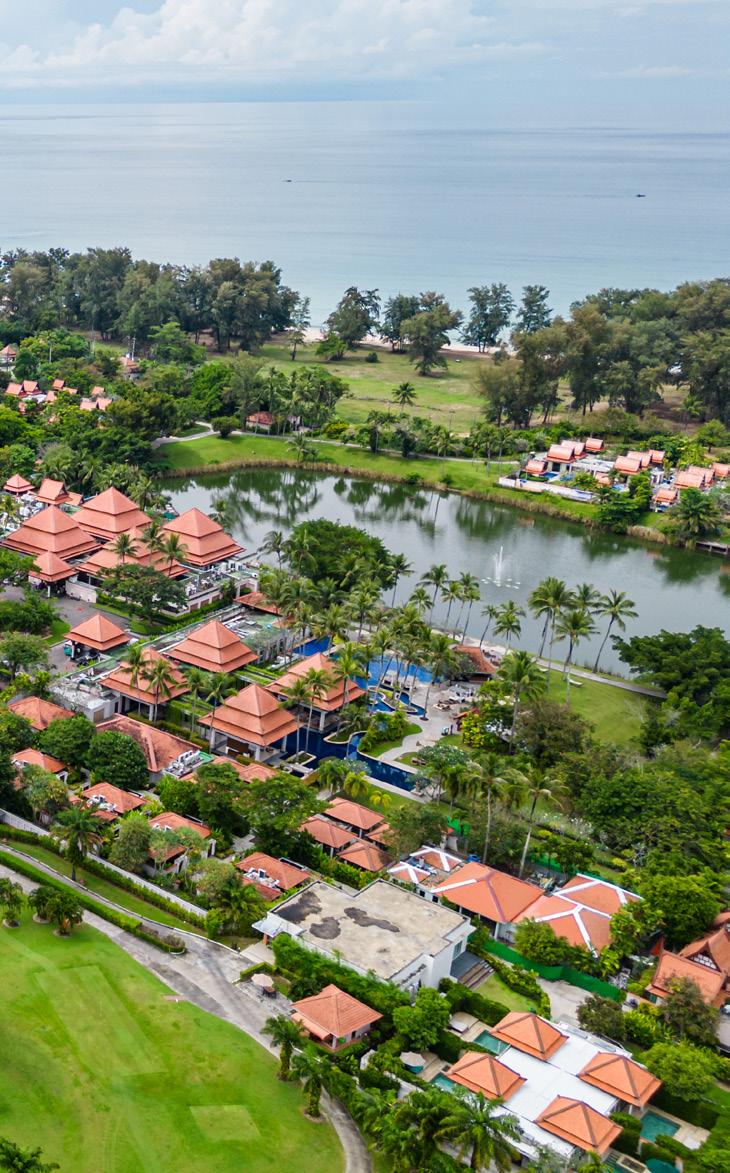
Par-3s: The second hole is a real knee-wobbler. Water right, bailout left, and a small green that requires commitment. The eighth adds character with old wooden boats in the pond – more than just decoration if you miss your line. Hole 12 is short, sharp and surrounded by sand – another stinger test.
Par-4s: The first is a dogleg right to get the blood flowing, with a Banyan tree waiting to ruin your second shot… as it did mine. The sixth is narrow, smartly bunkered, and a real card-wrecker if you’re not sharp off the tee. The 10th lures you into thinking it’s an easy start to the back nine, but miss long and you’re wet (again). The 18th? A 419-yard
finisher with OB left and sand right. Nail a par and you’ve earned your post-round drink.
Par-5s: The ninth is classic risk-reward – water, trees, mounds, bunkers. Everything but a monkey with a rangefinder. The 11th and 15th are gettable but force you to make smart decisions, particularly off the tee.
The clubhouse, built in traditional Thai villa style, has everything you need – great food, panoramic views, a well-stocked pro shop (shout out to the Peter Millar gear), and a lounge-perfect terrace.
After my round, I joined a traditional Loy Krathong activity back at the hotel, crafting a floating flower offering as a tribute to the Goddess of Water – a fitting ritual after losing several Pro V1s to her domain. A cocktail at Xana Beach Club as the sun dipped below the bay, followed by dinner at Benjarong where the flaming Mung Korn Lui Fai (lobster flambé) stole the show.
Laguna Golf Phuket isn’t just about golf – it’s a full experience. You’ve got six resorts to choose from, an open-air retail village (Canal Village), spas, family zones, and even shuttle boats connecting everything. It’s just 25 minutes from the airport, but once you arrive, you won’t want to leave.
It’s also perfectly located for a full-on golf trip – with a bunch of top-tier courses like Blue Canyon, Red Mountain and Loch Palm all within a 30-minute radius.
In short: bring your clubs, bring your mates (or your better half), and bring extra balls. Laguna is a golfing playground wrapped in luxury – and one round won’t be enough.

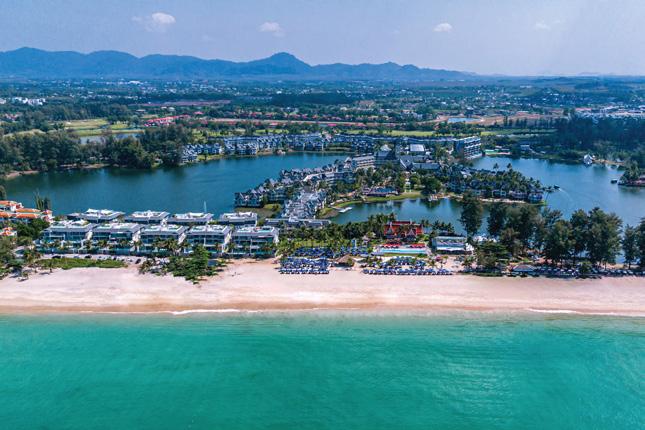

With four movable weights (13g x2, 4g x2) the R7 Quad Mini Driver gives you maximum adjustability to dial in spin, trajectory and shot shape exactly to your liking.

Old-school swagger, modern punch – but is it versatile enough to make the cut?
This year’s mini driver battle has largely been a twohorse race between the Callaway Elyte and Titleist GT280—both delivering superb tee-to-fairway versatility. But just when we thought the mini market
was stitched up, TaylorMade drop a nostalgia bomb in the form of the R7 Quad Mini Driver. A spiritual nod to the original R7 Quad from 2005—the club that rewrote the adjustability rulebook—this scaled-down version brings retro styling and modern tech together in one bold package.


At first glance, the 305cc head shape instantly transports you back to the pre-roll-back era, when belly putters were controversial and the R7 Quad was breaking boundaries. But don’t be fooled— this isn’t just a replica dressed in a retro paint job.
A new satin Infinity Carbon Crown takes centre stage, borrowing its sleek look from the Qi10 and Qi35 families, while
premium finish and adds a visual confidence boost at address.
Crucially, TaylorMade’s Quad Weighting System is back—this time with four movable weights (two 13g and two 4g) allowing you to tweak spin rates and shape your flight. Forward CG settings favour penetrating bombs off the tee, while rearward positioning helps with control and launch off the deck.
By: Alex Gallemore



The adjustability is a clear win. I set mine up to eliminate my usual left miss—an all-too-common flaw with non-adjustable mini drivers. The result? A reliable fairway finder that filled me with confidence from the tee box. But here’s where things got murky. The stock Speeder MD shaft, designed to lower spin without adding weight, was a bit of a mixed bag. From the turf, it
performed decently, giving me the height I needed. But off the tee? Spin crept up, robbing me of the optimal numbers I get from my standard gamer. This is where proper custom fitting becomes essential. Personally, I’d swap in a heavier, stiffer shaft to tighten dispersion and drop those spin rates— especially if you’re looking to bench your driver for tighter tracks.
The TaylorMade R7 Quad Mini Driver isn’t trying to be everything to everyone—and that’s its strength. It’s not as versatile as the GT280, nor as effortless off the deck as the Elyte, but if you’re hunting for a compact, confidence-boosting driver alternative to keep you in play when things get ropey, this might just be your new fairway friend. Yes, it’s dripping in nostalgia. Yes, it will likely sell out in a heartbeat. But more than anything, this club serves a purpose: stability. If your driver’s misbehaving and you need something to help you ride out the storm, the R7 Quad Mini is well worth a look.
Rating:
Best For: Golfers seeking a tee-box safety net with just enough adjustability to finetune shot shape
Avoid If: You’re after a fairway wood replacement or maximum versatility

Alex Leyno

Stephen Hubner has been part of the Dubai Golf family for almost 20 years, having started his career a golf professional at Dubai Creek Golf & Yacht Club in June 2006 before working his way up the ranks. He moved over to Jumeirah Golf Estates as Director of Golf Operations in 2018 and took over as Club Manager of the DP World Tour Championship venue in 2022.

If anyone is equipped to be a custodian of, and gatekeeper for, the exquisitely high standards and traditions that have kept Emirates Golf Club at the forefront of the GCC’s golf offering for over three and a half decades, it’s Hubner. Rick Bevan sat down with the 43 year old Scotsman to discuss his new role at the helm of one of the world’s most revered clubs


OF EXCELLENCE
Photography: Alex Leyno
Worldwide Golf: It must make things easier, being part of the same network and coming through the ranks learning a certain way of doing things. But after several years with Dubai Golf at one iconic venue, you’ve now taken the reins at arguably the most iconic venue in this region and one of the most wellknown clubs in world golf?
Stephen Hubner: I’ve really enjoyed working here since starting earlier this year. More than anything, I feel a strong sense of responsibility. As you said, it’s a prestigious, iconic venue, and I’m proud to have been entrusted with this role. But I certainly don’t take it lightly. It’s very important to me to continue the club’s traditions while also moving it forward. I’d say I feel proud, fortunate, but above all, deeply responsible.
WWG: As you mentioned, this club has always upheld elite standards. And when anyone starts a new role, you naturally want to put your own stamp on it. You don’t want to just replicate what’s been done—you want to add value. How do you approach preserving that tradition while still evolving things in your own way?
SH: Fortunately, I’ve been with the company and in Dubai for over 19 years, so I’ve seen a lot of the club’s evolution firsthand. I’ve also learned a great deal about its history and legacy. First and foremost, you need to be respectful of the people who came before you— those who helped shape what is now such an incredible facility and culture. That respect helps you approach change thoughtfully.
One of my key focuses is to embrace and promote the traditions and history of Emirates Golf Club. Since opening in 1988, it has built up a rich heritage. I want both members and guests to understand and be proud of that. At the same time, we’re in a dynamic, forwardthinking city, so we must keep improving the customer experience and continue progressing—without ever taking a step backwards.
WWG: That mirrors what Chris May said when I interviewed him before the Desert Classic. Emirates Golf Club has long been a leader in golf in the region, but with new courses popping up all the time, it would be easy to get left behind. Yet it hasn’t. How has the club managed to maintain that ‘best in class’ standard all these years?
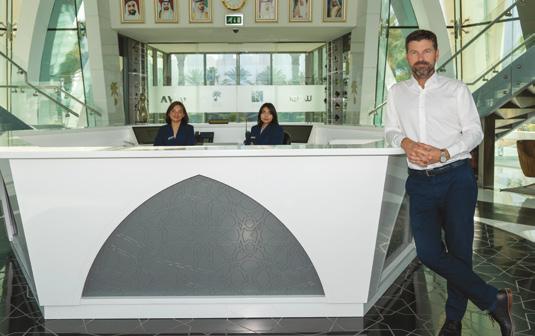
“FIRSTLY,
THE MAJLIS COURSE IS A MASTERPIECE. KARL LITTEN DESIGNED SOMETHING TRULY SPECIAL. PROFESSIONALS LOVE PLAYING IT. BACK IN 1988.”
SH: It comes down to several things. Firstly, the Majlis course is a masterpiece. Karl Litten designed something truly special. Professionals love playing it. Back in 1988, it was built in the middle of the desert—now it’s surrounded by a thriving city. Golf fans around the world have seen that transformation, which adds to the club’s identity and appeal.
Then there’s the clubhouse—the Bedouin tent-style design is iconic and instantly recognisable on TV. That familiarity helps us stay ahead.
But more than anything, it’s the people. From our members and club captains to the team in key roles—many of whom have been with us a long time—there’s a real understanding of the club’s traditions and a commitment to evolving in the right way. Having leaders like Chris May, and those before him like Andrew Whitelaw and Barney Coleman, has been crucial.
Also, since we became part of Wasl in 2009, the company has really encouraged us to grow, innovate, and open up to new members and ideas. That forward-thinking approach has been a big factor in our success.
WWG: If we look back at your time at Jumeirah Golf Estates (JGE), what are you most proud of achieving during your tenure there?
SH: I really loved my time at JGE. Dubai Golf took over management
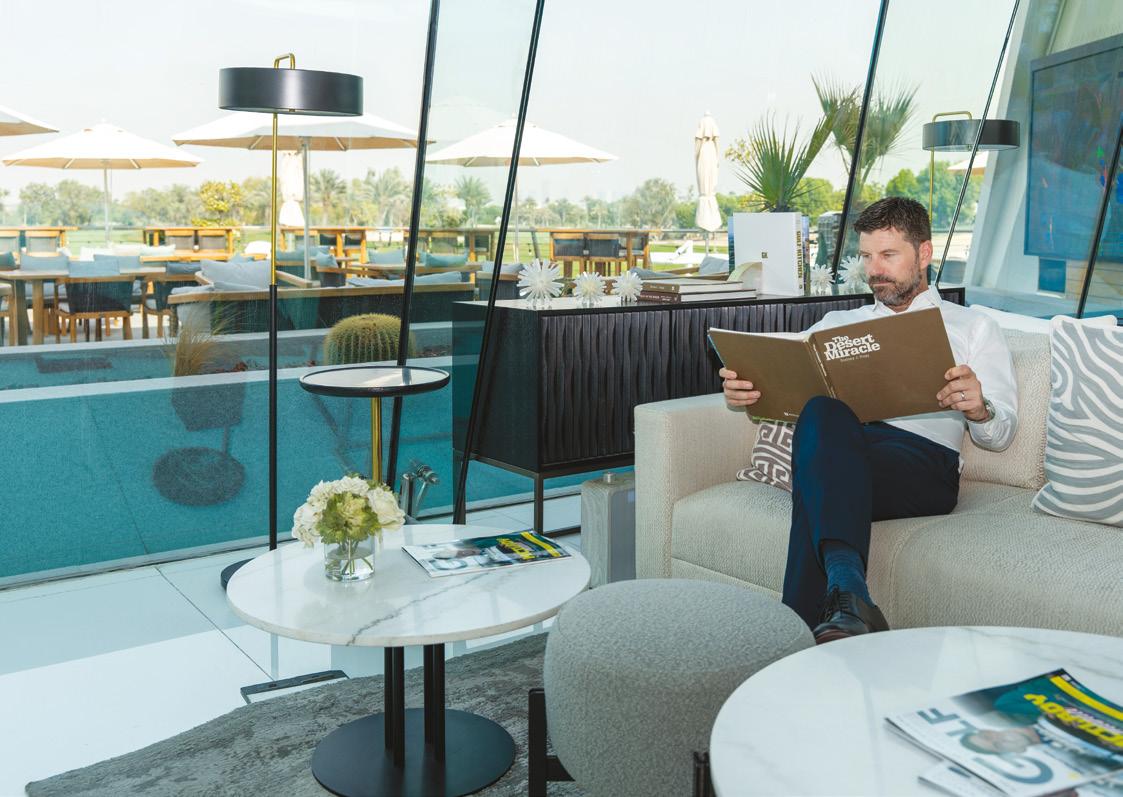

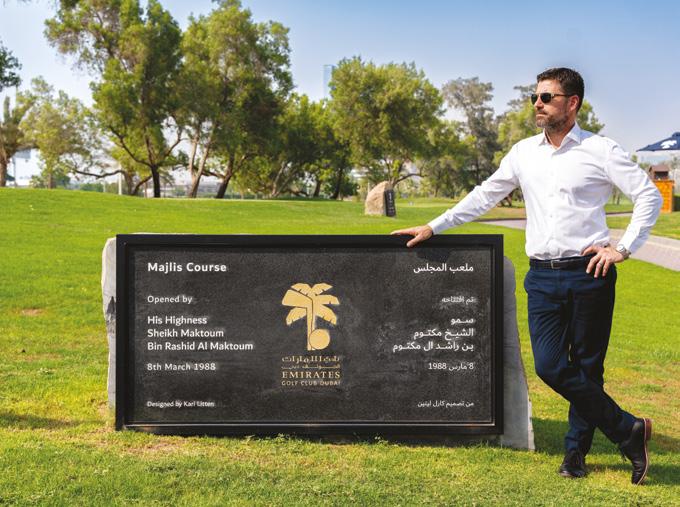
on October 1, 2018, and that was my first day there after being at Dubai Creek. I spent just over six years at JGE, and the thing I’m most proud of is enhancing the overall culture at the club.
I focused heavily on improving the colleague experience, knowing that if we take care of our team, they’ll take care of our members and guests. Building belief, providing training, creating a strong team culture—all of that translated into an improved member experience. And I think most members would agree that relationship grew stronger over the past six years.
WWG: So would you say that building a strong team culture is a key element of your management philosophy?
SH: Absolutely. It’s about creating a culture where people want to go the extra mile—not because they’re being watched, but because they believe in what they’re doing. That kind of team, with a shared desire and direction, is always more effective.
“One Team” is actually one of our core values. Of course, you need strategy and planning, but if your foundation is a united team culture— where everyone looks after one another and aims to deliver amazing experiences—that guides everything else.
WWG: Well said. While you were at JGE, you were closely involved with the DP World Tour Championship as it evolved. How rewarding was it to be part of such a high-profile tournament?
SH: It was incredibly rewarding. I remember attending the very first edition in 2009 when Lee Westwood won. It was a great event even then, but it’s grown tremendously. The credit goes to the DP World Tour team—their creativity and innovation are second to none.
I learned a lot from working with them. It was a privilege to be part of it, even if I can’t take any credit for its growth. People like Freddie Schmeisser, Tom Phillips, Graham Glen, previously Nick Tarratt, and the wider team have done an incredible job.
WWG: You got to see it from the inside, which not many people get to do. And now you have that same experience with the most iconic tournament in the region—the Hero Dubai Desert Classic. That must be exciting.
SH: Definitely. I remember watching it on TV as a kid. When I first came to Dubai in 2005, I visited Emirates Golf Club and
thought, “Wow, I’m really here.” I used to watch Seve Ballesteros giving short game tips on a VHS filmed at the Majlis. So, to now be part of this place is incredible.
Over the years, I’d always make time to come down to the Desert Classic—even just for a day. This year, I was here the whole week, every hour, and it was fantastic. The changes in hospitality, on-course F&B, the village atmosphere—it’s been amazing to see how the event has evolved.
One of the key strengths of the Dubai Desert Classic is its spectator experience. The course layout allows you to see multiple greens and tees from one spot, and everything is close to the clubhouse and amenities. It’s compact, but doesn’t feel cramped—perfect for fans and TV.
WWG: Chris said the same thing. It’s a compact course, but it never feels small. That makes it great for spectators and broadcasters. Now, we’ve talked a lot about golf, but in today’s environment, how important is hospitality and the wider member experience at a modern club?
SH: It’s crucial. Golf is our core, of course, but a club is also a place where people spend their leisure time. They work hard, and when they come here, we want to offer a wide range of top-quality experiences—whether it’s dining, socialising, wellness, or sport.
We need to constantly enhance what we offer, through new ideas or by doing tried-and-true things even better. For me, if your whole team is focused on the member experience, then guests will naturally have a wow experience too.
That’s what happens at top country clubs in the U.S.—they focus on members, and visitors are blown away by the service. We’re aiming to create that same standard here.
WWG: And finally, for people who haven’t visited the club yet—what can members or guests expect from the Emirates Golf Club experience?
SH: Beyond the two outstanding courses—Faldo and Majlis—we also have floodlit golf on the Faldo and our par-3 course. The Peter Cowen Golf Academy is here too, with eight full-time PGA professionals and more joining soon, plus incredible technology in our swing studios.
We also offer a wide range of other activities—paddle tennis has really taken off, and we have tennis courts, squash, a gym, and plenty of personal training sessions. We’re also partnered with Up and Running, the longest-standing sports rehab clinic in Dubai, so there’s a full wellness component.
Ultimately, we want everyone—members, guests, athletes, families—to feel like they’re part of something special when they walk through our doors.
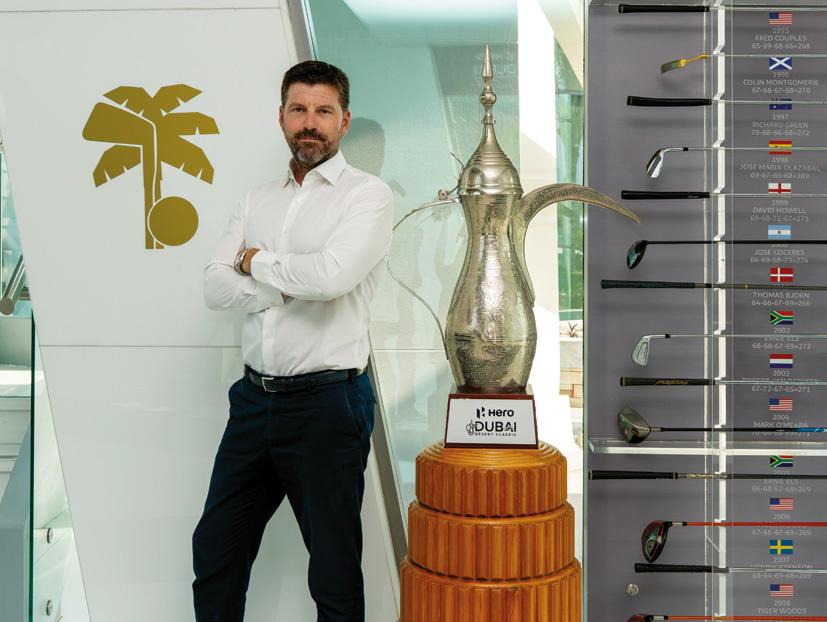
Forget sibling rivalry – these two are rewriting the script with fairways, flags, and a shared dream.When Mousa and Hashem Shana’ah step onto the tee at this year’s U.S. Junior Amateur, they won’t just be flying the flag for Jordan – they’ll be making a statement for Middle East golf on one of the biggest junior stages in the game. One’s 18 and already a proven winner. The other is just 14 and fearless. But together, they’re turning heads as a family force that’s bringing some serious bite to junior golf’s biggest week.






Photography: Alex Leyno

Raised in Dubai with a fire to win, the Shana’ah brothers are here to do more than just compete –they’re here to chase greatness.
“THIS ONE’S FOR JORDAN – AND FOR US” Mousa, the elder of the two and already a seasoned competitor, is relishing the chance to share this moment with his younger brother.
“This is one of the biggest junior events in the world,” says Mousa. “To be able to compete at that level and do it alongside my brother – that’s something I’ll remember forever.”
For Hashem, who’s still only 14, it’s a huge leap — but one he’s fully embracing.
“I’m excited, nervous, proud… all of it,” he grins. “It’s the highest level I’ve ever played at, and doing it with Mousa just makes it even better.”
Mousa competed in the same event in 2024 but didn’t make it past stroke play. So, what’s changed this time?
“It was a tough lesson,” he admits. “But it gave me clarity. This year the goal is the same – work hard, stay focused, play my game. It’s about stepping up when it matters.”
And he’s certainly been stepping up. Recent wins at the Oman Ominvest Masters and the GEM International Amateur at Abu Dhabi City GC prove he’s in red-hot form.
Having tasted elite competition in the U.S., Mousa is well aware of the challenge that lies ahead.
“The depth of the field, the conditions, the pressure – it’s different gravy out there,” he says. “But I love it. It pushes me to get better. I want to prove I can win not just in the Middle East, but anywhere.”
LITTLE BRO’S READY TO SWING BIG
For Hashem, it’s his first major test on U.S. soil – but don’t expect him to be overawed.
“I’m training harder than ever,” he says. “Longer sessions, more gym work – building stamina and composure. Just being there is already pushing me to raise my game.”
So, has Mousa passed on any big brother advice?
“He’s helped loads with the mental side,” says Hashem. “Staying calm, keeping focus, saving energy – those little things that can make a big difference out there.”
This year’s venue, Trinity Forest Golf Club, is a modern, links-style course with plenty of bite. It’s a departure from the more traditional venues used in years past.
“It’s newer, so it’s harder to study how guys have tackled it before,” Mousa explains. “But we’ll do our homework. Learn the layout, the lines, how the ball reacts. That’s all part of the job.”
The brothers aren’t alone in flying the Jordanian flag in Texas. This year, three players from the kingdom have made the cut – a sign, perhaps, of a new era in Jordanian golf?
“We’ve all got that hunger to be the best,” says Mousa, currently the highest-ranked Jordanian amateur. “Whatever success we get over there, it reflects on all of us. It’s great for the country.”
Their father Abedalla adds that the family’s base in Dubai has been instrumental.
“Growing up in the UAE has been a huge advantage,” says Mousa. “You’ve got world-class courses, incredible facilities, and access to high-level

events. It’s been the perfect environment for us to grow our game.”
The U.S. Junior Amateur has a star-studded alumni list – from Tiger Woods and Jordan Spieth, to Nick Dunlap, who’s gone from teen prodigy to PGA Tour champion in just a few years.
Does that kind of trajectory inspire them?
“Massively,” says Mousa. “You look at those names and think, ‘Why not me?’ I want to create my own story. I want to be that guy someone else looks up to one day.”
“It’s part of my journey to be the best in the world,” Hashem adds. “This is just the start.”
THE ROAD AHEAD
Both brothers are clearly grounded but ambitious. For Mousa, the next chapter could be college golf in the U.S. For Hashem, it’s all about building momentum.
“I just want to keep competing, keep improving,” Mousa says. “And do everything I can to put Jordanian golf on the global map.”
QUICK FACTS: THE SHANA’AH BROTHERS
Mousa Shana’ah (18)
Based in Dubai, born in Jordan
• Coach: Stephen Dean
• Wins: Oman Ominvest Masters, GEM International Amateur (Abu Dhabi)
• Highest-ranked Jordanian amateur 2024 Asia-Pacific and Asian Games participant
Hashem Shana’ah (14)
• Based in Dubai, born in Jordan
• Wins: Oman Ominvest Masters (Junior), GEM Junior Masters
• Making his U.S. Junior Amateur debut

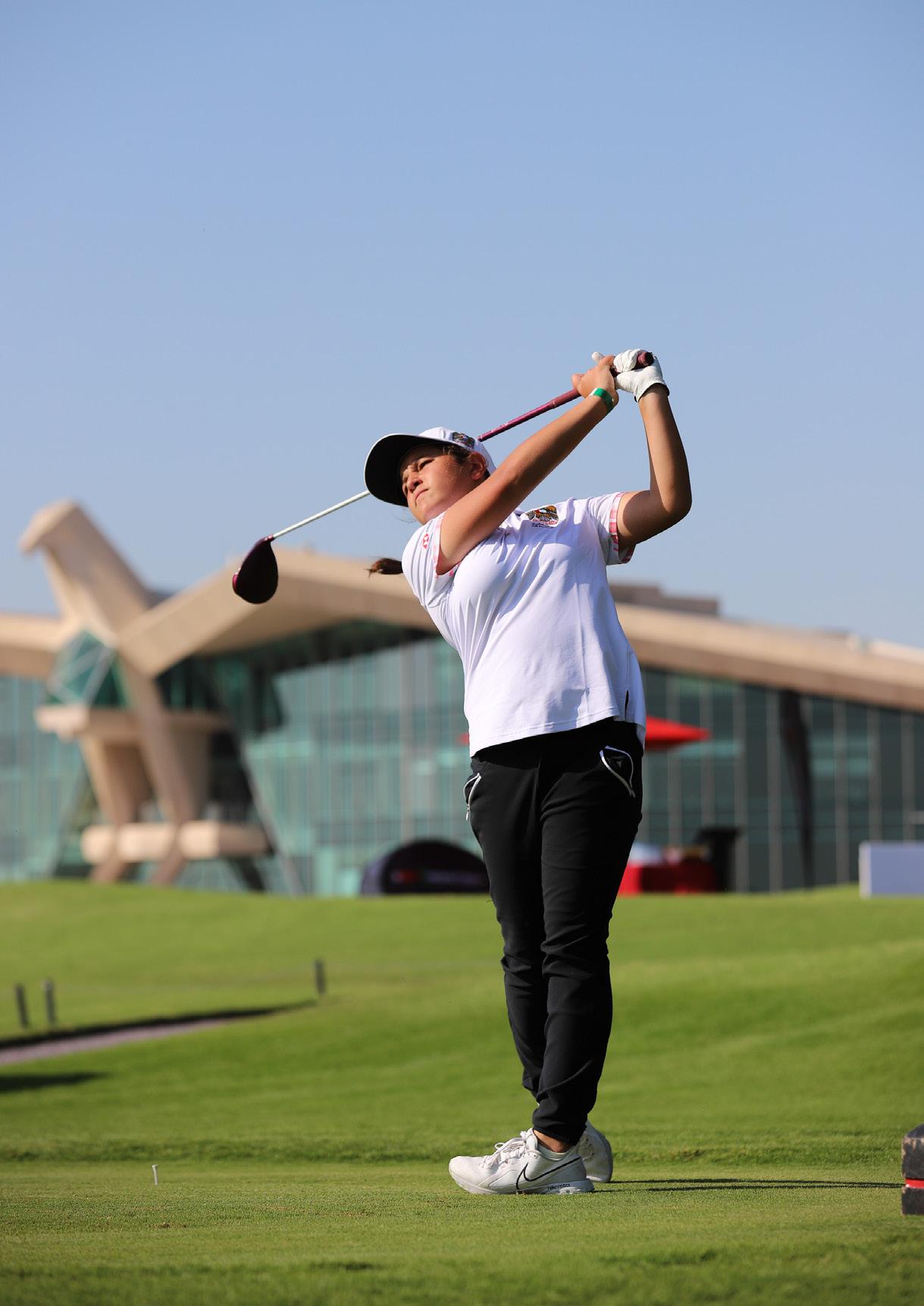

Photography: Alex Leyno
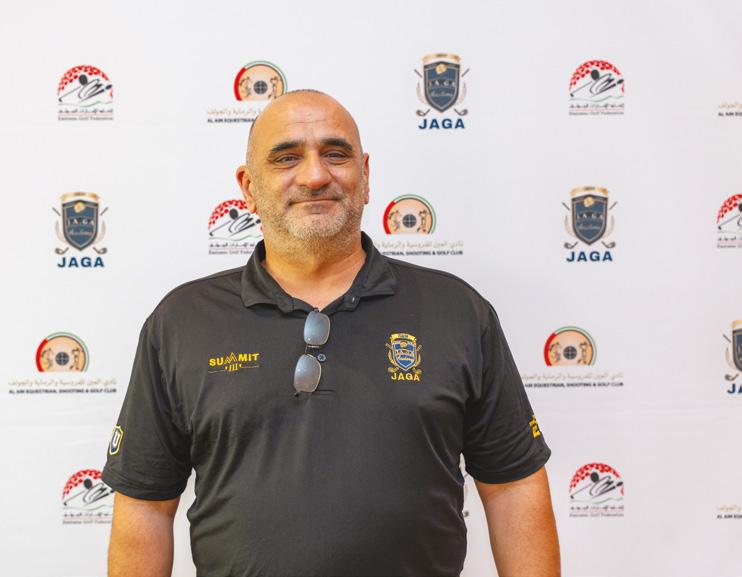
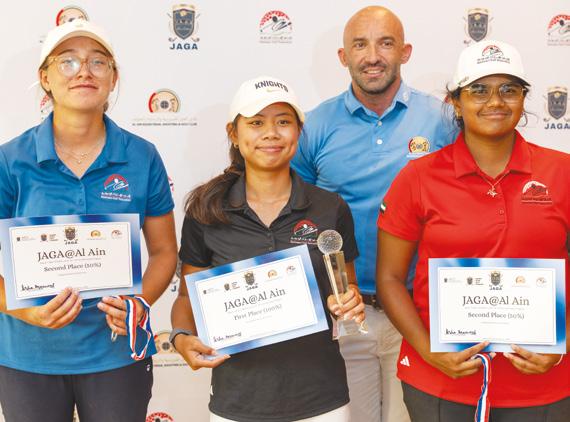
Following a successful staging of the JAGA International Amateur Open last month - where more than 30 rising stars competed in searing 50°C heat for Clutch Pro Tour invites with Ananyaa Sood and Rayan Ahmed coming out on top - the Junior Asian Golf Academy (JAGA) took a major step toward its ambitious Middle East expansion. Hosted in partnership with the Emirates Golf Federation (EGF) at Al Ain Equestrian Shooting and Golf Club, the event served not only as a showcase of elite junior talent but also as a preview of what’s to come. This September, JAGA will open its first Middle East campus at the same venue, establishing a full-time boarding school and training centre that will also become the home of the UAE National Golf Team.
Worldwide Golf sat down with Dr. Cell Dilon, JAGA’s Chief International Relations Officer and Head of School, to learn more about the vision behind this pioneering facility and what it means for the future of junior golf in the region.
Worldwide Golf: Why did you choose the UAE for JAGA’s first regional facility?
Dr. Cell Dilon: The UAE serves as a gateway between East and West and is ideally located to attract top junior golfers from Asia, Europe, and Africa. Geographically, it’s a perfect hub. But beyond location, the facilities here are world-class. They allow us to provide junior golfers with the best possible environment for development.
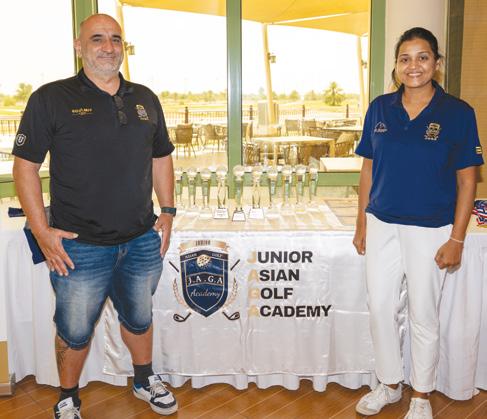
Why
CD: It’s a great honour for us to be here in such an amazing facility. The support from the Emirates Golf Federation (EGF) has been outstanding, giving us a level of professionalism and experience we’ve long sought. It’s a chance to showcase what JAGA stands for - a premier academy for junior golf excellence.
WWG: What’s the long-term vision for JAGA in the UAE?
CD: Our goal is clear: to build the best junior golf academy in the world. We want to attract players from across the region and internationally, offering them a foundation for both golf and life. Even after graduation, this will be a home they can return to. The UAE is already a regional hub for excellence, and we believe golf will become a key part of that landscape - with JAGA playing a central role.
WWG: How does JAGA balance academics with high-level golf training?
CD: It’s challenging, but we’ve found a solution. Our academic partner is NPU in Canada, offering the Ontario Secondary School Diploma—consistently ranked in the top five globally. Traditional schools often struggle to accommodate elite golf training. Our model ensures students don’t fall behind. Each has a course planner for the year, allowing them to stay on track, even during tournaments. Class

sizes are capped at 10–12, so students get individual attention. It’s about meticulous planning and high standards in both academics and sport.
WWG: How is this model different from other junior golf academies?
CD: different, but what sets us apart is the combination of top-tier academics and elite golf development. We’ve developed our own training methodology - what we call, ‘The JAGA Way’. It includes custom performance analysis and a progression system inspired by martial arts belt levels, from white to black. This helps students develop in a structured, measurable way - both in golf and academics. Many students see an immediate “JAGA Bump” in performance after joining.
WWG: Can you explain more about

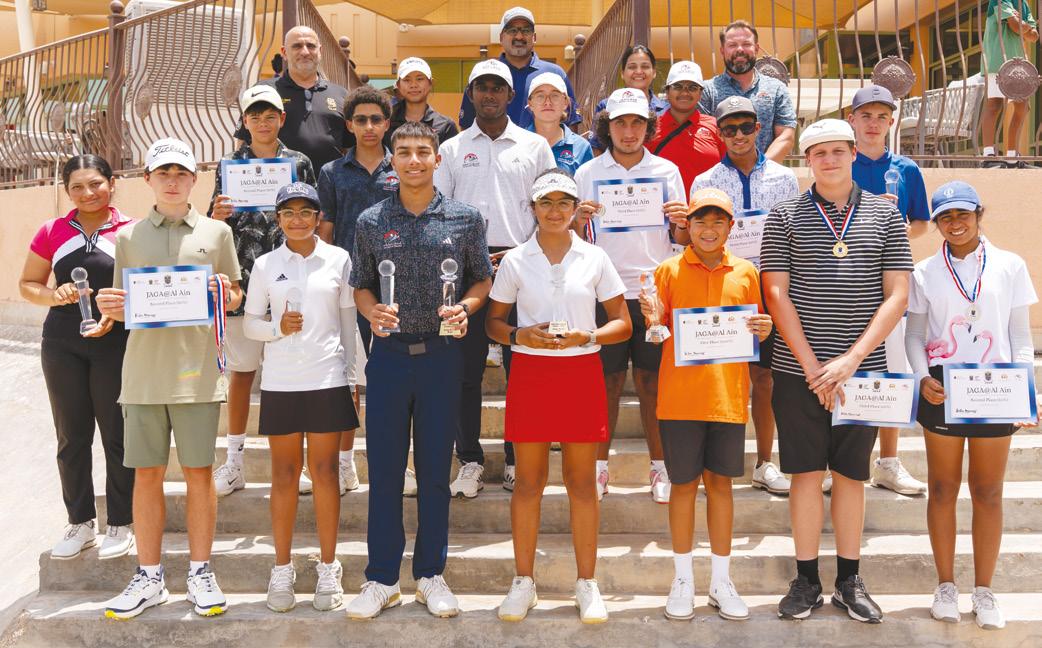
the Ontario Secondary School Diploma programme?
CD: It’s a government-accredited programme, recognised globally. Students take eight subjects per year - four in each semester - allowing them to focus deeply on each one. Traditional schools often have students juggling 12–16 subjects at once, which makes balance difficult. Our system offers more depth and flexibility.
WWG: What kind of coaching and facilities will be available?
CD: Our base will be in Al Ain, about an hour from Dubai. It includes dormitories and the JAGA International Training Centre, equipped with launch monitors and skill-specific zones for putting, short game, and driving. Our belt system structures development and ensures students are constantly progressing.
WWG: How do you measure student successon and off the course?
CD: We track performance daily. Students log their results and receive feedback to adjust their training. Long term, we measure success by college placements. Our mission is to make them “collegeready,” and so far, we’ve had great success with placements and scholarships.
WWG: What are the post-graduation pathways for students?
CD: We’ve had students secure 100% scholarships in the U.S., Taiwan, and Japan. All of this year’s graduates have already secured college placements before graduation. Our role is to guide them - whether they aim for scholarships, professional tours, or other paths. We build the road; they choose the destination.
WWG: How does the UAE’s infrastructure and climate support your goals?
CD: Year-round golf is a huge advantage. Even during hot months, we adjust training to cooler hours or use
courses with night lighting. The UAE’s infrastructure and support help us maintain consistent, high-quality development throughout the year.
WWG: How will you collaborate with local golf organisations?
CD: We’re open to everyone - national teams, academies, federations. In Thailand, we started Ryder Cup-style events with other schools and academies, and we plan to do the same here. We call our campuses JAGA Villages, and that means no one is excluded.
WWG: How important is local Emirati talent to your vision?
CD: During the recent JAGA International Amateur Open, we saw impressive talent among Emirati players. We’re excited to work with the EGF and local athletes, supporting their growth with our expertise and facilities.
WWG: What role can JAGA play in positioning the UAE as a junior golf hub?
CD: A significant one. Through our International Training Centre, students can use our proprietary methods, the JAGA Way app, and the belt system to track and improve their skills. This kind of structure can elevate the UAE’s status as a global centre for junior golf development.
WWG: How will this facility contribute to the long-term growth of golf in the region?
CD: The course here is beyond what I imagined - beautiful and challenging,

which is perfect for developing young players. The high-quality facilities will definitely draw in aspiring athletes. I believe playing at JAGA will become a bucket-list experience for many juniors worldwide.
WWG: Are there plans for outreach or scholarship programs?
CD: Absolutely. Our philosophy is simple: we don’t look at income, background, or religion. JAGA Village is open to all. Since day one, my motto has been: “We don’t say no - we say, ‘Here’s an opportunity.’” And we

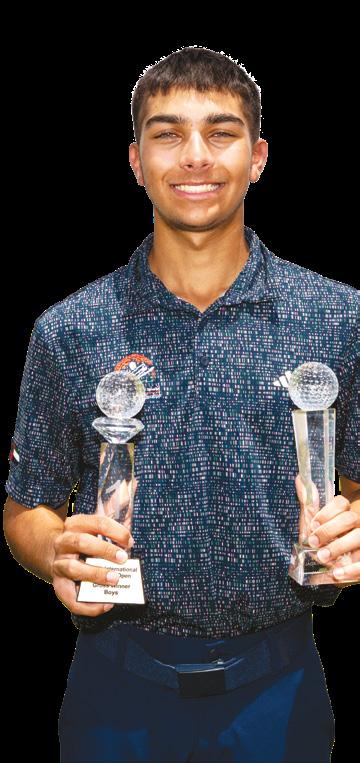
On a final day packed with drama, the Amateurs fought back to retain the Dubai Golf Trophy after a tense 16-16 draw at the iconic Majlis Course at Emirates Golf Club. Despite starting Monday’s singles
session one point behind, the Amateurs dug deep - with crucial wins from Barry Pavic, Aayan Dadabhoy, and UAE National Ahmad Skaik, who edged out Professional Louis Gaughan 1-up in a tightly contested battle.
Rick Bevan caught up with Skaik, who went unbeaten over the weekend and played a pivotal role in helping the Amateurs retain the Trophy, to reflect on the match and his return to this prestigious UAE event.

Worldwide Golf: You edged a narrow 1UP win against Louis Gaughan — what made the difference for you in such a tight match?
Ahmad Skaik: It was a tight match. I was actually hitting the ball really well but just wasn’t making any putts. I was 4-up through 11 and cruising, but I made a mistake on 12 and Louis capitalized — then the momentum started shifting his way. By the time we went down 18, I was 1-up and knew what the situation was. There were three matches left including mine and we needed two points. One of the others was 1-down, so I knew the five-foot putt I had on the last was to keep our hopes alive.
I was very nervous and shaky — I haven’t been that nervous over a putt in a long time — but I was happy to drain it and beat Louis, who’s known as one of the best players on the pro side.
WWG: As a UAE National, how meaningful is it for you to contribute to the Amateur team’s success in such a prestigious local event?
AS: It was amazing to contribute to the Amateur team’s victory with three points. It felt really special to be the only one to get all three points. I played really well all three rounds, so I’m very happy with that. I’ve played this great tournament six times and have won it as Vice Captain and as Captain. Then I got injured and didn’t play in it for three years — I never thought I’d play it again. But Jay, who was Vice Captain, and Dan are good friends of mine and they asked me to play for them, so I was happy to do so and get three points for them.
WWG: What was the atmosphere like within the team heading into the singles, especially being one point behind?
AS: We were one behind heading into the singles, but we actually knew we were going to give up another two points because two of our players had exams and couldn’t play. So really, we were three behind. We knew it was going to be tough and probably come down to the last few matches. But we



“
IT’S BEEN A REALLY GOOD START TO THE YEAR. I’M VERY, VERY HAPPY THAT ALL THE HARD WORK IS STARTING TO PAY OFF - IT’S BEEN A LONG STRUGGLE”.
kept telling the players: ‘You’re in this team because you earned it. You’re all good players. Don’t focus on what others are doing — just focus on your own game and try to get your own point.’
I didn’t look at the scores until they told me on the 18th. We just told everyone not to worry about the leaderboard — just get the job done, and if it doesn’t happen, it doesn’t happen.
WWG: How does a performance like this help your confidence heading into the rest of the season?
AS: It’s been a really good start to the year. I’m very, very happy that all the hard work is starting to pay off - it’s been a long struggle. This definitely boosts my confidence, especially because it’s the first time I’ve gone 3-0 in the Dubai Golf Trophy. I really wanted that result going into the week, especially knowing the pros had such a strong team. I had three tough matches, so I’m proud of the way I performed.
Now I’m off to Spain for the next HotelPlanner Tour event - hopefully I can keep building on this and make even bigger moves!

SOFT, RESPONSIVE INSERT
The new Scottsdale putter family for preferred feel and distance control. Available in a variety of alignment designs and stroke types to fit your game.

Tour-proven grip is standard on all regular-length models. The mid-length Craz-E CB (37.75″) features a 17″ grip (pictured).

